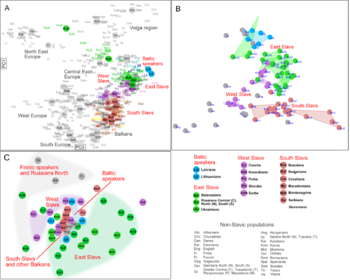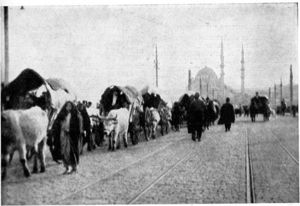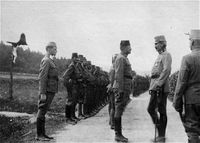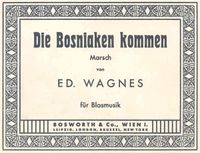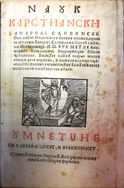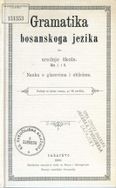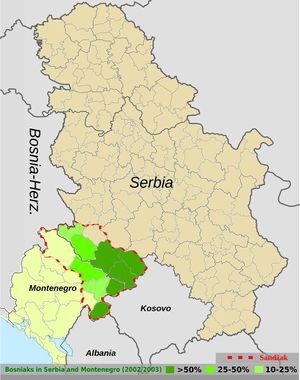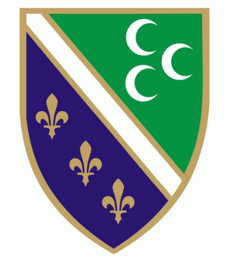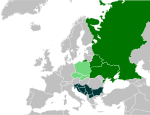بشناق
| التعداد الإجمالي | |||||||||||||||||||||||||||||||
|---|---|---|---|---|---|---|---|---|---|---|---|---|---|---|---|---|---|---|---|---|---|---|---|---|---|---|---|---|---|---|---|
| تقدر بنحو 2.4 - 4.4 مليون | |||||||||||||||||||||||||||||||
| المناطق ذات التواجد المعتبر | |||||||||||||||||||||||||||||||
| 158,158[2] | |||||||||||||||||||||||||||||||
| 136,087[3] | |||||||||||||||||||||||||||||||
| 108,047[4] | |||||||||||||||||||||||||||||||
| 98,766[5] | |||||||||||||||||||||||||||||||
| 55,464[6] | |||||||||||||||||||||||||||||||
| 53,000[7] | |||||||||||||||||||||||||||||||
| 48,184[8] | |||||||||||||||||||||||||||||||
| 46,773[9] | |||||||||||||||||||||||||||||||
| 21,542[10] | |||||||||||||||||||||||||||||||
| 21,040[11] | |||||||||||||||||||||||||||||||
| 20,755[12] | |||||||||||||||||||||||||||||||
| 17,018[13] | |||||||||||||||||||||||||||||||
| 17,993[14] | |||||||||||||||||||||||||||||||
| 15,649[15] | |||||||||||||||||||||||||||||||
| 2,182[16] | |||||||||||||||||||||||||||||||
| 400,000[17] | |||||||||||||||||||||||||||||||
| اللغات | |||||||||||||||||||||||||||||||
| البوسنية | |||||||||||||||||||||||||||||||
| الديانة | |||||||||||||||||||||||||||||||
| الغالبية الساحقة إسلام | |||||||||||||||||||||||||||||||
| الجماعات العرقية ذات الصلة | |||||||||||||||||||||||||||||||
| الأمم السلاڤية، خصوصاً سلاڤ الجنوب | |||||||||||||||||||||||||||||||
البشناق أو البوسنيون هم مسلمو البوسنة والهرسك ومناطقهم الرئيسية البوسنة والهرسك (48%) واقليم السنجق الواقع بين منطقتي جمهورية كوسوفو والجبل الاسود. ولايزال السنجق تابعاً لصربيا حتى اليوم مع ان سكانه 95% من المسلمين. وقد هاجر الكثير من المسلمين البشناق إلى البلاد الإسلامية بعد معاهدة أدرنة 1829 لاسيما إلى الأراضي التركية أول الامر ومنها إلى بلاد الشام والتي كانوا يسمونها مثل اخوانهم من بلاد القوقاز ب شام شريف ويخلعون احذيتهم عند وصولهم لاول بلدة تتكلم العربية فيها، تبركاً بها لأنها بلاد العرب وبلاد الرسول. ولايزال يعيش في هذه المنطقة عدد كبير منهم سيما في سورية (حلب حيث استوطنوا فيها وأولها بلدة حريتان، حمص، دمشق، حوران) ولبنان (طرابلس، بيروت، صيدا) وفلسطين (نابلس، جنين) ثم اتجه فريق منهم نحو مصر فبلاد المغرب ولا تزال حتى اليوم عائلات معروفة (بوشناق) معروفة في تونس والجزائر والمغرب. كما توجد اعداد منهم اتجهت نحو مكة والمدينة المنورة ولها فيها شأن ثقافي وتجاري كما هي احوالهم في كافة البلاد المسلمة التي لجؤوا لها جميعا وقد ساهموا بقوة في الحياة الثقافية والعلمية والاقتصادية والسياسية حيثما حلوّ وعدد الشخصيات " الكبيرة " التي اثرت في البقاع التي استوطنوها كبير جدا (لايمكن اختصاره الآن) ولعل اشهر شخصية عرفتها بلاد الشام : الوالي المجاهد أحمد باشا بشناقالذي قضى على طموحات نابليون بالالتفاف على الاستانة من الشرق لا من الغرب والوصل لباريس ! وقد رده على اعقابه مدحورا في عكا سنة 1799 بمعونة السلطان محمود الثالث وحاميته واستغلاله الذكي عداء البنادقة (شمال شرقي ايطاليا الحالية) تجارالبندقية وجنوة لنابليون والذين قدموا له المؤن أثناء الحصار... وحظي بلقب الجزار من قبل الموارنة في الشام لانهم كانوا يحلمون بوصول محررهم نابليون ليرشوا عليه الازهار وينثروا الارز. كما فعلوها مع شارون عندما احتل بيروت حرفيا بعد قرنين من الزمان تقريبا وقد منعهم من فرحتهم تلك صلابة الوالي المجاهد والذي ولاه السلطان بعد الموقعة الشهيرة ولاية دمشق مكافئة على بسالته وجنوده وصمود المسلمين البطولي في عكا.
من اشهر الشخصيات البوشناقية السياسية في تركيا رئيسة الوزراء السابقة تانسو شيلر وهناك الدكتور عبد الرحمن بوشناق عضو المجمع اللغوي في عمان وقائد الدفاع الجوي في مصر السابق اللواء كمال بوشناق وفي سورية تسلم العديد منهم مناصب قيادية وعلمية رفيعة. في حلب ودمشق.
هناك جالية كبيرة تقدر بـ 2.000.000 في تركيا. بينما تزيد الجالية البوسنية التي اجبرت على الهجرة لمختلف دول اوربا الغربية وامريكا وبعض الدول العربية أثناء الفطائع العرقية عن مليون بوسني. بعد انفراط الاتحاد السوفيتي السابق وموت الرئيس جوزيف بروز تيتو وتولي مجرم الحرب العرقية السابق سلوبودان ميلوشيفتش أعمال التطهير العرقي واستخدم الجيش الوغسلافي ومليشيات اجرامية صربة تم انشاؤها لهذا الغرض تزعمها الطبيب النفسي الامريكي الجنسية الصربي العرقية كاراديتش الذي وقع قبل فترة قصيرة فقط بيد محكمة العدل الدولية في لاهاي. وارتكب القوات الصربية مجازر غير مسبوقة في التاريخ ضد بشر عزل وتحت عين وبصر (القوات الدولية والهولندية) كما حصل في (سربرنيتشا) شمال البوسنة وغيرها من مدن يوغسلافيا السابقة.
ينتمى البوشناق في الاصل إلى السلافيين الجنوبيين لكنهم حين اعتنقوا الإسلام قبل وصول الفاتحين العثمانيين بحوالي قرن كامل وانتشر الإسلام بشكل واسع في منطقةالبلقان خلال وجود العثمانيين، وبعد المجازر التي حصلت في البوسنة والبانية بعد وقوعها تحت حكم الامبراطورية النمساوية بعد فترة من موقعة زنتا 1699 بين العثمانيين والنمسا وروسيا وبولندة هاجر الكثير منهم إلى تريكا الحالية والبلاد العربية جنوب المتوسط واطلق الناس عليهم (البشانقة) أو (البوشناق) نسبة لبلادهم كما هاجر اليها عدد كبير من المسلمين في القوقاز (الشيشان الشركس، الارناؤوط، داغستان، آباظة ,, ,,,) خلال الفترة نفسها والحروب مع القصيرية الروسية ويتميز البشماق عن مختلف المسلمين في العالم بان الإسلام [جنسيتهم] تمييزا لهم عن العرق السلافي وهذه مسألة فريدة في اعالم تقريبا حين تصبح العقيدة : جنسية ! ودخولهم في الاسم كاخوهم الالبان كان مبكرا جداويعود في راي المؤرخين لسقوط القسطنطينية بيد الفاتح محمد ومنذ تلك الايام أصبح الإسلام ميزتهم وجنسهم الذي فصلهم عن ماضيهم.فعرقهم الجديد أصبح مسلمون بين السلاف.
العرق
اسم العرق
بوشناق بوسنقي
According to the Bosniak entry in the Oxford English Dictionary, the first preserved use of "Bosniak" in English was by British diplomat and historian Paul Rycaut in 1680 as Bosnack, cognate with post-classical Latin Bosniacus (1682 or earlier), French Bosniaque (1695 or earlier) or German Bosniak (1737 or earlier).[18] The modern spelling is contained in the 1836 Penny Cyclopaedia V. 231/1: "The inhabitants of Bosnia are composed of Bosniaks, a race of Sclavonian origin".[19] In the Slavic languages, -ak is a common suffix appended to words to create a masculine noun, for instance also found in the ethnonym of Poles (Polak) and Slovaks (Slovák). As such, "Bosniak" is etymologically equivalent to its non-ethnic counterpart "Bosnian" (which entered English around the same time via the Middle French, Bosnien): a native of Bosnia.[20]
From the perspective of Bosniaks, bosanstvo (Bosnianhood) and bošnjaštvo (Bosniakhood) are closely and mutually interconnected, as Bosniaks connect their identity with Bosnia and Herzegovina.[21]
The earliest attestation to a Bosnian ethnonym emerged with the historical term "Bošnjanin" (Latin: Bosniensis) which denoted the people of the medieval Bosnian kingdom.[22] By the 15th century,[18] the suffix -(n)in had been replaced by -ak to create the current form Bošnjak (Bosniak), first attested in the diplomacy of Bosnian king Tvrtko II who in 1440 dispatched a delegation (Apparatu virisque insignis) to the Polish king of Hungary, Władysław Warneńczyk (1440–1444), asserting a common Slavic ancestry and language between the Bosniak and Pole.[23][24][25] The Miroslav Krleža Lexicographical Institute thus defines Bosniak as "the name for the subjects of the Bosnian rulers in the pre-Ottoman era, subjects of the Sultans during the Ottoman era, and the current name for the most numerous of the three constituent peoples in Bosnia and Herzegovina. Bosniak, as well as the older term Bošnjanin (in Lat. Bosnensis), is originally a name defining the inhabitants of the medieval Bosnian state".[26]
The Bosniaks derive their ethnonym from Bosnia, first mentioned in De Administrando Imperio by the Byzantine emperor Constantine VII,[27] in chapter 32, which is titled "About the Serbs and the lands in which they dwell today", as the horion ("small country") of "Bosona" (Βοσωνα) apparently in "baptized Serbia". Linguists have traditionally proposed the name to be derived from the eponymous river Bosna; believed to be a pre-Slavic hydronym in origin[28][29] and possibly mentioned for the first time during the 1st century AD by Roman historian Marcus Velleius Paterculus under the name Bathinus flumen.[30] Another basic source associated with the hydronym Bathinus is the Salonitan inscription of the governor of Dalmatia, Publius Cornelius Dolabella, where it is stated that the Bathinum river divides the Breuci from the Osseriates.[31]
Some scholars also connect the Roman road station Ad Basante, first attested in the 5th century Tabula Peutingeriana, to Bosnia.[32][33] According to the English medievalist William Miller in the work Essays on the Latin Orient (1921), the Slavic settlers in Bosnia "adapted the Latin designation [...] Basante, to their own idiom by calling the stream Bosna and themselves Bosniaks [...]".[32]
According to philologist Anton Mayer the name Bosna could essentially be derived from Illyrian Bass-an-as(-ā) which would be a diversion of the Proto-Indo-European root *bhoĝ-, meaning "the running water".[34] The Croatian linguist, and one of the world's foremost onomastics experts, Petar Skok expressed an opinion that the chronological transformation of this hydronym from the Roman times to its final Slavicization occurred in the following order; *Bassanus> *Bassenus> *Bassinus> *Bosina> Bosьna> Bosna.[34]
Other theories involve the rare Latin term Bosina, meaning boundary, and possible Slavic and Thracian origins.[28][35] Theories that advocates the link of the name Bosnia, and thus of the Bosniaks with the Early Slavs of northern Europe has initially been proposed by the 19th century historians Joachim Lelewel and Johann Kaspar Zeuss, who considered the name of Bosnia to be derived from a Slavic ethnonym, Buzhans (Latin: Busani), mentioned in the Primary Chronicle and by the Geographus Bavarus in his Description of cities and lands north of the Danube. According to both Lelewel and Zeuss Buzhans settled in Bosnia.[36][37] The theory of Slavic origin of the name Bosnia and it's possible connection with the Slavic tribe of Buzhans, came also to be advocated by the 20th and 21th century Yugoslav and Bosnian historians such as Marko Vego,[38] Muhamed Hadžijahić[39] and Mustafa Imamović.[40]
For the duration of Ottoman rule, the word Bosniak came to refer to all inhabitants of Bosnia; Turkish terms such as "Boşnak milleti", "Boşnak kavmi", and "Boşnak taifesi" (all meaning, roughly, "the Bosnian people"), were used in the Empire to describe Bosnians in an ethnic or "tribal" sense; and indeed, 17th-century Ottoman traveler and writer Evliya Çelebi reports in his work Seyahatname of the people in Bosnia as natively known as Bosniaks (Bošnjaci).[41] However, the concept of nationhood was foreign to the Ottomans at that time – not to mention the idea that Muslims and Christians of some military province could foster any common supra-confessional sense of identity. The inhabitants of Bosnia called themselves various names: from Bosniak, in the full spectrum of the word's meaning with a foundation as a territorial designation, through a series of regional and confessional names, all the way to modern-day national ones. In this regard, Christian Bosnians had not described themselves as either Serbs or Croats prior to the 19th century, and in particular before the Austrian occupation in 1878, when the current tri-ethnic reality of Bosnia and Herzegovina was configured based on religious affiliation.[42] Social anthropologist Tone Bringa develops that "Neither Bosniak, nor Croat, nor Serb identities can be fully understood with reference only to Islam or Christianity respectively, but have to be considered in a specific Bosnian context that has resulted in a shared history and locality among Bosnians of Islamic as well as Christian backgrounds."[43]
الهوية
Bosniaks are generally defined as the South Slavic nation on the territory of the former Yugoslavia whose members identify themselves with Bosnia and Herzegovina as their ethnic state and are part of such a common nation, and of whom a majority are Muslim by religion. Nevertheless, leaders and intellectuals of the Bosniak community may have various perceptions of what it means to be Bosniak. Some may point to an Islamic heritage, while others stress the purely secular and national character of the Bosniak identity and its connection with Bosnian territory and history.[44] Moreover, individuals outside Bosnia and Herzegovina may hold their own personal interpretations as well. Some people, such as Montenegrin Abdul Kurpejović, recognize an Islamic component in the Bosniak identity but see it as referring exclusively to the Slavic Muslims in Bosnia.[45] Still others consider all Slavic Muslims in the former Yugoslavia (i.e. including the Gorani) to be Bosniaks.[46]
In Yugoslavia,[47] unlike the preceding Austro-Hungarian Empire,[48] there was no official recognition of Bosniak ethnicity.[49] As a political compromise, the Constitution of Yugoslavia was amended in 1968 to introduce "Muslims" in a national (as opposed to religious) sense; effectively recognizing a constitutive nation whilst avoiding the recognition of "Bosniak" or "Bosnian" as ethnic or national designations. Prior to this, the great majority of Bosnian Muslims had declared either Ethnically Undecided Muslim or – to a lesser extent – Undecided Yugoslav in censuses pertaining to Yugoslavia as the other available options were Serb-Muslim and Croat-Muslim.[50] Although it achieved recognition as a distinct nation by an alternative name, the use of Muslim as an ethnic designation was opposed early on as it sought to label Bosniaks a religious group instead of an ethnic one. To quote Bosnian president Hamdija Pozderac at the time:
They don't permit Bosnianhood but they offer Muslimhood. Let us accept their offer, although the wrong name, but with it we shall start the process.
— In discussion with Josip Broz Tito in 1971 on the constitutional changes which recognized "Muslims"[51]
Upon Bosnia and Herzegovina's declaration of independence from Yugoslavia in the early 1990s, the great majority of Bosnian Muslims aligned themselves with the Bosniak identity. In September 1993, at the height of the Bosnian War, the Second Bosniak Congress formed a basis for the official re-establishment of the historical ethnic name Bosniak and deprecation of the former Muslim in use during SFR Yugoslavia.[52] Today, the election law of Bosnia and Herzegovina, as well as the Constitution of Bosnia and Herzegovina, recognizes the results from the 1991 population census as results referring to Bosniaks which are, alongside Bosnian Serbs and Bosnian Croats, one of the three constituent nations in post-war Bosnia and Herzegovina and the single largest ethnic group in the country.
In other ex-Yugoslav countries with significant Slavic Muslim populations, adoption of the Bosniak name has been less consistent. The effects of this phenomenon can best be seen in the censuses. For instance, the 2003 Montenegrin census recorded 48,184 people who registered as Bosniaks and 28,714 who registered as Muslim by nationality. Although Montenegro's Slavic Muslims form one ethnic community with a shared culture and history, this community is divided on whether to register as Bosniaks (i.e. adopt Bosniak national identity) or as Muslims by nationality.[45] Similarly, the 2002 Slovenian census recorded 8,062 people who registered as Bosnians, presumably highlighting (in large part) the decision of many secular Bosniaks to primarily identify themselves in that way (a situation somewhat comparable to the Yugoslav option during the socialist period). However, such people comprise a minority (even in countries such as Montenegro where it is a significant political issue) while the great majority of Slavic Muslims in the former Yugoslavia have adopted the Bosniak national name.
| "Muslims/Muslimani" in SFR Yugoslavia | |||||||||||||
| الجمهورية | 1971 | 1981 | 1991 | ||||||||||
|---|---|---|---|---|---|---|---|---|---|---|---|---|---|
| Bosnia and Herzegovina | 1,482,430 (39.6%) | 1,630,033 (39.5%) | 1,902,956 (43.5%) | ||||||||||
| Montenegro | 70,236 (13.3%) | 78,080 (13.4%) | 89,614 (14.6%) | ||||||||||
| Croatia | 18,457 (0.4%) | 23,740 (0.5%) | 43,469 (0.9%) | ||||||||||
| Macedonia | 1,248 (0.1%) | 39,512 (2.1%) | 35,256 (1.7%) | ||||||||||
| Slovenia | 3,197 (0.2%) | 13,425 (0.7%) | 26,867 (1.4%) | ||||||||||
| Serbia | 154,364 (1.8%) | 215,166 (2.3%) | 246,411 (2.5%) | ||||||||||
| Yugoslavia | 1,729,932 (8.4%) | 1,999,957 (8.9%) | 2,344,573 (10.0%) | ||||||||||
العلاقة بالقوميتين الكرواتية والصربية
As a melting ground for confrontations between different religions, national mythologies, and concepts of statehood, much of the historiography of Bosnia and Herzegovina has since the 19th century been the subject of competing Serb and Croat nationalist claims part of wider Serbian and Croatian hegemonic aspirations in Bosnia and Herzegovina, inherently interwoven into the complex nature of the Bosnian War at the end of the 20th century.[53] As Andras Riedlmayers's research for the Hague Tribunal demonstrates: What happened in Bosnia is not just genocide, the willful destruction of the essential foundations of one particular community or group of people within a society [....] What happened in Bosnia is also described as sociocide, the murdering of a progressive, complex, and enlightened society in order that a regressive, simple, and bigoted society could replace it.[54]
According to Mitja Velikonja, Bosnia and Herzegovina constitutes "a historical entity which has its own identity and its own history".[55] Robert Donia claims that as Serbia and Croatia only occupied parts of Bosnia and Herzegovina briefly in the Middle Ages, neither have any serious historical claims to Bosnia.[56] Moreover, Donia states that although Bosnia did interact with its Serb and Croat neighbors over the centuries, it had a very different history and culture from them.[57] 12th-century Byzantine historian John Kinnamos reported that Bosnia was not subordinated to the Grand Count of Serbia; rather the Bosnians had their own distinct way of life and government.[58] The expert on medieval Balkan history John V.A. Fine reports that the Bosnians (Bošnjani) have been a distinct people since at least the 10th century.[59]
It is noted that writers on nationalism in Yugoslavia or the Bosnian War tend to ignore or overlook the Bosnian Muslim ideology and activity and see them as victims of other nationalisms and not nationalistic themselves.[60]
الأصل
The Early Slavs, a people from northeastern Europe, settled the territory of Bosnia and Herzegovina (and neighboring regions) in the sixth and early seventh century (amid the Migration Period), and were composed of small tribal units drawn from a single Slavic confederation known to the Byzantines as the Sclaveni (whilst the related Antes, roughly speaking, colonized the eastern portions of the Balkans).[61][62] Upon their arrival, the Slavs assimilated the Paleo-Balkan, mostly romanized tribes, generically known as the Illyrians on the territory of present-day Bosnia and Herzegovina, but also the romanized Celtic population which had intermingled with these since the 4th century BC, and to a lesser extent the Germanic-speaking Ostrogoths which had entered the area in the late 4th century AD. Timothy Gregory writes that "It is now generally agreed that the people who lived in the Balkans after the Slavic "invasions" were probably for the most part the same as those who had lived there earlier, although the creation of new political groups and arrival of small numbers of immigrants caused people to look at themselves as distinct from their neighbours, including the Byzantines"[63]
Being a remote and mountainous region, Bosnia appears to have been settled by a smaller number of Slavic colonizers than the region in general and perhaps served as an area of refuge for the indigenous peoples.[64] Tribes recorded under the ethnonyms of "Serb" and "Croat" are described as a second, latter, migration of different people during the second quarter of the 7th century who do not seem to have been particularly numerous;[61][65] these early "Serb" and "Croat" tribes, whose exact identity is subject to scholarly debate,[66] came to predominate over the Slavs in the neighboring regions. Bosnia proper, however, appears to have been a territory outside Serb and Croat rule not being enumerated as one of the regions settled by those tribes.[67] In time, Bosnia would come to form an independent unit under a ruler, Ban Kulin, calling himself Bosnian.[68] In the 14th century a Bosnian kingdom centered on the river Bosna emerged. Its people, when not using local (county, regional) names, called themselves Bosnians.[59][69]
Following its conquest by the Ottoman Empire in the mid-15th century, Bosnia experienced a rapid and extensive conversion of the local Christian population to Islam, and by the early 1600s roughly two thirds of Bosnians were Muslim.[70][71] In addition, a smaller number of converts from outside Bosnia were in time assimilated into the common Bosniak unit, such as Croats (mainly in Turkish Croatia, and the Muslims of Slavonia that fled to Bosnia following the Austro-Turkish war), Serbian and Montenegrin Muhacirs (in Sandžak particularly Islamicized descendants of the Old Herzegovinian and highlander tribes from Brda region, such as Rovčani, Moračani, Drobnjaci and Kuči), and slavicized Vlachs,[72] Albanians[72] and German Saxons.[72]
علم الجينات
An autosomal analysis study of 90 samples showed that Western Balkan populations had a genetic uniformity, intermediate between South Europe and Eastern Europe, in line with their geographic location. According to the same study, Bosnians (together with Croatians) are by autosomal DNA closest to East European populations and overlap mostly with Hungarians.[73] In the 2015 analysis, Bosnians formed a western South Slavic cluster with the Croatians and Slovenians in comparison to eastern cluster formed by Macedonians and Bulgarians with Serbians in the middle. The western cluster (Bosnians included) has an inclination toward Hungarians, Czechs, and Slovaks, while the eastern cluster toward Romanians and some extent Greeks.[74] Based on analysis of IBD sharing, Middle Eastern populations most likely did not contribute to genetics in Islamicized populations in the Western Balkans, including Bosniaks, as these share similar patterns with neighboring Christian populations.[73]
Y-DNA studies on Bosniaks (in Bosnia and Herzegovina) show close affinity to other neighboring South Slavs.[75] Y-DNA results show notable frequencies of I2 with 43.50% (especially its subclade I2-CTS10228+), R1a with 15.30% (mostly its two subclades R1a-CTS1211+ and R1a-M458+), E-V13 with 12.90% and J-M410 with 8.70%. Y-DNA studies done for the majority Bosniak populated city of Zenica and Tuzla Canton, shows however a drastic increase of the two major haplogroups I2 and R1a. Haplogroup I2 scores 52.20% in Zenica (Peričić et al., 2005) and 47% in Tuzla Canton (Dogan et al., 2016), while R1a increases up to 24.60% and 23% in respective region.[76][77] Principal component analysis of Y-chromosomal haplogroup frequencies among the three ethnic groups in Bosnia and Herzegovina, Serbs, Croats, and Bosniaks, showed that Bosnian Serbs and Bosniaks are by Y-DNA closer to each other than either of them is to Bosnian Croats.[78]
In addition, mtDNA studies shows that the Bosnian population partly share similarities with other Southern European populations (especially with mtDNA haplogroups such as pre-HV (today known as mtDNA haplogroup R0), HV2 and U1), but are for the mostly featured by a huge combination of mtDNA subclusters that indicates a consanguinity with Central and Eastern Europeans, such as modern German, West Slavic, East Slavic and Finno-Ugric populations. There is especially the observed similarity between Bosnian, Russian and Finnish samples (with mtDNA subclusters such as U5b1, Z, H-16354, H-16263, U5b-16192-16311 and U5a-16114A). The huge differentiation between Bosnian and Slovene samples of mtDNA subclusters that are also observed in Central and Eastern Europe, may suggests a broader genetic heterogeneity among the Slavs that settled the Western Balkans during the early Middle Ages.[79]
التاريخ
العصور الوسطى
وصول السلاڤ
The western Balkans had been reconquered from "barbarians" by Byzantine Emperor Justinian (r. 527–565). Sclaveni (Slavs) raided the western Balkans, including Bosnia, in the 6th century.[80] The De Administrando Imperio (DAI; ca. 960) mentions Bosnia (Βοσωνα/Bosona) as a "small/little land" (or "small country",[81] χοριον Βοσωνα/horion Bosona) part of Serbia,[81] having been settled by Serbs along with Zahumlje and Travunija (both with territory in modern-day Bosnia and Herzegovina);[68] it was referred to only once, at the end of the 32nd chapter on the Serbs (a chapter overall drawn from older writings).[81] This is the first mention of a Bosnian entity; it was not a national entity, but a geographical one, mentioned strictly as an integral part of Serbia.[81] Some scholars assert that the inclusion of Bosnia in Serbia merely reflect the status in DAI's time.[82] In the Early Middle Ages, Fine, Jr. believes that what is today western Bosnia and Herzegovina was part of Croatia, while the rest was divided between Croatia and Serbia.[68]
After the death of Serbian ruler Časlav (r. ca. 927–960), Bosnia seems to have broken away from the Serbian state and became politically independent.[83] Bulgaria briefly subjugated Bosnia at the turn of the 10th century, after which it became part of the Byzantine Empire.[83] In the 11th century, Bosnia was part of the Serbian state of Duklja.[83][84]
In 1137, the Kingdom of Hungary annexed most of the Bosnia region, then briefly lost it in 1167 to Byzantum before regaining her in the 1180s. Prior to 1180 (the reign of Ban Kulin) parts of Bosnia were briefly found in Serb or Croat units.[85] Anto Babić notes that "Bosnia is mentioned on several occasions as a land of equal importance and on the same footing as all other [South Slavic] lands of this area."[86]
After frequent change of rule over the area between regional powers, a de facto independent Bosnian state known as the Banate of Bosnia arose in the 12th century, though nominally under Hungarian sway.
إقليم بنات بالبوسنة والكنيسة البوسنية


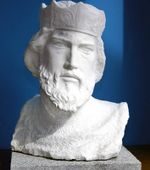
Christian missions emanating from Rome and Constantinople had since the ninth century pushed into the Balkans and firmly established Catholicism in Croatia, while Orthodoxy came to prevail in Bulgaria, Macedonia, and eventually most of Serbia. Bosnia, lying in between, remained a no-man's land due to its mountainous terrain and poor communications. By the twelfth century most Bosnians were probably influenced by a nominal form of Catholicism characterized by a widespread illiteracy and, not least, lack of knowledge in Latin amongst Bosnian clergymen. Around this period, Bosnian independence from Hungarian overlordship was effected during the reign (1180–1204) of Kulin Ban whose rule marked the start of a religiopolitical controversy involving the native Bosnian Church. The Hungarians, frustrated by Bosnia's assertion of independence, successfully denigrated its patchy Christianity as heresy; in turn rendering a pretext to reassert their authority in Bosnia. Hungarian efforts to gain the loyalty and cooperation of the Bosnians by attempting to establish religious jurisdiction over Bosnia failed however, inciting the Hungarians to persuade the papacy to declare a crusade: finally invading Bosnia and warring there between 1235 and 1241. Experiencing various gradual success against stubborn Bosnian resistance, the Hungarians eventually withdrew weakened by a Mongol attack on Hungary. On the request of the Hungarians, Bosnia was subordinated to a Hungarian archbishop by the pope, though rejected by the Bosnians, the Hungarian-appointed bishop was driven out of Bosnia. The Bosnians, rejecting ties with international Catholicism came to consolidate their own independent church, known as the Bosnian Church, condemned as heretical by both the Roman Catholic and Eastern Orthodox churches. Though scholars have traditionally claimed the church to be of a dualist, or neo-Manichaean or Bogomil nature (characterized by the rejection of an omnipotent God, the Trinity, church buildings, the cross, the cult of saints, and religious art), some, such as John Fine, have stressed domestic evidence indicating the retention of basic Catholic theology throughout the Middle Ages.[87] Most scholars agree that adherents of the church referred to themselves by a number of names; dobri Bošnjani or Bošnjani ("good Bosnians" or simply "Bosnians"), Krstjani (Christians), dobri mužje (good men), dobri ljudi (good people) and boni homines (following the example of a dualist group in Italy). Catholic sources refer to them as patarini (patarenes), while the Serbs called them Babuni (after Babuna Mountain), the Serb term for Bogomils. The Ottomans referred to them as kristianlar while the Orthodox and Catholics were called gebir or kafir, meaning "unbeliever".[88] The majority of the knowledge about the church is retrieved from outside sources.
التوسع والمملكة البوسنية
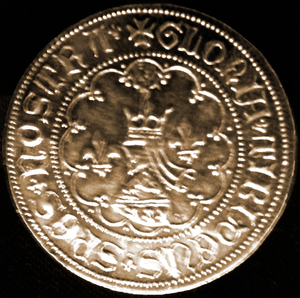

The Bosnian state was significantly strengthened under the rule (ca. 1318–1353) of ban Stephen II of Bosnia who patched up Bosnia's relations with the Hungarian kingdom and expanded the Bosnian state, in turn incorporating Catholic and Orthodox domains to the west and south; the latter following the conquer of Zahumlje (roughly modern-day Herzegovina) from the Serbian Nemanjić dynasty. In the 1340s, Franciscan missions were launched against alleged "heresy" in Bosnia; prior to this, there had been no Catholics – or at least no Catholic clergy or organization – in Bosnia proper for nearly a century. By the year 1347, Stephen II was the first Bosnian ruler to accept Catholicism, which from then on came to be – at least nominally – the religion of all of Bosnia's medieval rulers, except for possibly Stephen Ostoja of Bosnia (1398–1404, 1409–18) who continued to maintain close relations with the Bosnian Church. The Bosnian nobility would subsequently often undertake nominal oaths to quell "heretical movements" – in reality, however, the Bosnian state was characterized by a religious plurality and tolerance up until the Ottoman invasion of Bosnia in 1463.[89]

By the 1370s, the Banate of Bosnia had evolved into the powerful Kingdom of Bosnia following the coronation of Tvrtko I of Bosnia as the first Bosnian king in 1377, further expanding into neighboring Serb and Croat dominions. However, even with the emergence of a kingdom, no concrete Bosnian identity emerged; religious plurality, independent-minded nobility, and a rugged, mountainous terrain precluded cultural and political unity. As Noel Malcolm stated: "All that one can sensibly say about the ethnic identity of the Bosnians is this: they were the Slavs who lived in Bosnia."[90]
الأسلمة والدولة العثمانية

Upon his father's death in 1461, Stephen Tomašević succeeded to the throne of Bosnia, a kingdom whose existence was being increasingly threatened by the Ottomans. In the same year, Stephen Tomašević made an alliance with the Hungarians and asked Pope Pius II for help in the face of an impending Ottoman invasion. In 1463, after a dispute over the tribute paid annually by the Bosnian Kingdom to the Ottomans, he sent for help from the Venetians. However, no help ever arrived to Bosnia from Christendom;[91] King Matthias Corvinus of Hungary, Skenderbeg of Albania and the Ragusans all failed to carry out their promises,[92] while the Venetians flatly refused the king's pleas.[93] In 1463, Sultan Mehmed the Conqueror led an army into the country. The royal city of Bobovac soon fell, leaving Stephen Tomašević to retreat to Jajce and later to Ključ. Mehmed invaded Bosnia and conquered it very quickly, executing the last Bosnian king Stephen Tomašević and his uncle Radivoj. Bosnia officially fell in 1463 and became the westernmost province of the Ottoman Empire.
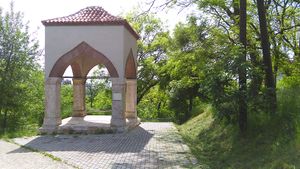
The Croatian humanist and poet Marko Marulić, known as the Father of the Croatian Renaissance,[94] wrote Molitva suprotiva Turkom (Prayer against the Turks) – a poem in 172 doubly rhymed dodecasyllablic stanzas of anti-Turkish theme, written between 1493 and 1500, where he, among others, included Bosniaks as the one of peoples who resisted the Ottomans.[95]
The rise of Ottoman rule in the Balkans modified the religious picture of Bosnia and Herzegovina as the Ottomans brought with them a new religion, Islam. Throughout the entire Balkans people were sporadically converting in small numbers; Bosnia, by contrast, experienced a rapid and extensive conversion of the local population to Islam, and by the early 1600s approximately two thirds of the population of Bosnia were Muslim.[70] Slovenian observer Benedikt Kuripečič compiled the first reports of the religious communities in the 1530s. According to the records for 1528 and 1529, there were a total of 42,319 Christian and 26,666 Muslim households in the sanjaks (Ottoman administrative units) of Bosnia, Zvornik and Herzegovina. In a 1624 report on Bosnia (excluding Herzegovina) by Peter Masarechi, an early-seventeenth-century apostolic visitor of the Roman Catholic Church to Bosnia, the population figures are given as 450,000 Muslims, 150,000 Catholics and 75,000 Orthodox Christians.[96] Generally, historians agree that the Islamization of the Bosnian population was not the result of violent methods of conversions but was, for the most part, peaceful and voluntary.[97] Scholars have long debated the reasons that made this collective acceptance of Islam possible among the Bosniaks, although the religious dynamic of medieval Bosnia is frequently cited.[98] Peter Masarechi, saw four basic reasons to explain the more intensive Islamization in Bosnia: the 'heretical past' of the Bosnians, which had left them confessionally weak and capable of transferring their allegiance to Islam; the example of many Bosnians who had attained high office through the devşirme, and as powerful men were in a position to encourage their relatives and associates to convert; a desire to escape from the burdens of taxation and other services levied on non-Muslim citizens; and finally, an equally strong desire to escape the proselytizing importunities of Franciscan monks among the Orthodox population.[99] Always on a purely religious ground, it is also said, by the orientalist Thomas Walker Arnold for instance, that because of the major heresy in the region at the time, oppressed by the Catholics and against whom Pope John XXII even launched a crusade in 1325, the people were more receptive to the Ottoman Turks. In fact, in the tradition of Bosnian Christians, there were several practices that resembled Islam; like for instance; praying five times a day (reciting the Lord's Prayer).[100] In time, hesitant steps were made towards acceptance of Islam. At first, this Islamisation was more or less nominal. In reality, it was an attempt at reconciling the two faiths. It was a lengthy and halting progress towards their final abandoning of their beliefs. For centuries, they were not considered full-fledged Muslims, and they even paid taxes like Christians.[101] This process of Islamisation was not yet finished in the 17th century, as is witnessed by a keen English observer, Paul Rycaut, who states in The Present State of the Ottoman Empire in 1670: "But those of this Sect who strangely mix Christianity and Mahometanism together, are many of the Souldiers who live on the confines of Serbia and Bosnia; reading the gospel in the Sclavonian tongue…; besides which, they are curious to learn the mysteries of the Alchoran [Quran], and the Law of Arabick tongue. [...] The Potures [Muslims] of Bosna are of this Sect, but pay taxes as Christians do; they abhor Images and the sign of the Cross; they circumcise, bringing the Authority of Christ's example for it."[102]


Many children of Christian parents were separated from their families and raised to be members of the Janissary Corps (this practice was known as the devşirme system, 'devşirmek' meaning 'to gather' or 'to recruit'). Owing to their education (for they were taught arts, science, maths, poetry, literature and many of the languages spoken in the Ottoman Empire), Serbian, Croatian and Bosnian became one of the diplomatic languages at the porte. The Ottoman period that followed was characterized by a change in the landscape through a gradual modification of the settlements with the introduction of bazaars, military garrisons and mosques. Converting to Islam brought considerable advantages, including access to Ottoman trade networks, bureaucratic positions and the army. As a result, many Bosnians were appointed to serve as beylerbeys, sanjak-beys, mullahs, qadis, pashas, muftis, janissary commanders, writers, and so forth in Istanbul, Jerusalem and Medina. Among these were important historical figures were: prince Sigismund of Bosnia (later Ishak Bey Kraloğlu), Hersekzade Ahmed Pasha, Isa-beg Ishaković, Gazi Husrev-beg, Damat Ibrahim Pasha, Ferhad Pasha Sokolović, Lala Mustafa Pasha and Sarı Süleyman Pasha. At least seven viziers were of Bosnian origin, of which the most renowned was Sokollu Mehmed Pasha (who served as Grand Vizier under three sultans: Suleiman the Magnificent, Selim II, and Murad III[52]). The Ottoman rule also saw many architectural investments in Bosnia and the creation and development of many new cities including Sarajevo and Mostar. This is mostly because of the high esteem the Bosniaks held in the eyes of the Sultans and the Turks. Bosnia became also a strategic base from which the Ottomans launched their armies northward and westward on campaigns of conquest and pillage. The Turks regarded Bosnia as a "bastion of Islam" and its inhabitants served as frontier guards (serhatlije).[107] The presence of Bosnians in the Ottoman Empire had an important social and political effect on the country: it created a class of powerful state officials and their descendants which came into conflict with the feudal-military spahis and gradually encroached upon their land, hastening the movement away from the feudal tenure towards private estates and tax-farmers, creating a unique situation in Bosnia where the rulers were native inhabitants converted to Islam.[108] Although geographically located in Europe, Bosnia was perceived as culturally distant. Because of the strong Islamic character of the country during the Ottoman period, Bosnia was perceived as more oriental than the Orient itself, an 'authentic East within Europe'.[109] The English archeologist Arthur Evans, who traveled through Bosnia and Herzegovina in the 1870s, claimed that "Bosnia remains the chosen land of Mahometan [Muslim] Conservatism [...] fanaticism has struck its deepest roots among her renegade population, and reflects itself even in the dress."[110][111]
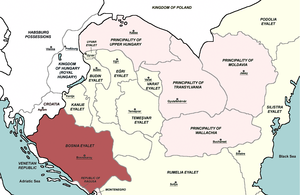
Ottoman rule affected the ethnic and religious make-up of Bosnia and Herzegovina in additional ways. A large number of Bosnian Catholics retreated to the still unconquered Catholic regions of Croatia, Dalmatia, and Slovenia, at the time controlled by Habsburg Monarchy and the Republic of Venice, respectively. To fill up depopulated areas of northern and western Eyalet of Bosnia, the Ottomans encouraged the migration of large numbers of hardy settlers with military skills from Serbia and Herzegovina. Many of these settlers were Vlachs, members of a nomadic pre-Slav Balkan population that had acquired a Latinate language and specialized in stock breeding, horse raising, long-distance trade, and fighting. Most were members of the Serbian Orthodox church. Before the Ottoman conquest, that church had very few members in the Bosnian lands outside Herzegovina and the eastern strip of the Drina valley; there is no definite evidence of any Orthodox church buildings in central, northern, or western Bosnia before 1463. With time most of the Vlach population adopted a Serb identity.[113][114][115]
The 17th century brought major defeats and military setbacks on the Ottoman Empire's western frontier. With major wars occurring every few decades, Bosnia was economically and militarily exhausted. For Bosnia and Bosniaks, the most critical conflict of all was the Great Turkish War. At its very start in the mid-1680s, the Habsburgs retook nearly all of Ottoman Hungary, sending tens of thousands of Muslim refugees flooding into the Bosnian region. A similar process occurred with the Habsburg conquest of Lika and Slavonia. Thousands of Muslims from these parts fled eastward into the Bosnian pashaluk, while those who remained were forcibly converted to Catholicism. In total, it is estimated that more than 100,000 Muslims were expelled from the frontier regions and settled in Bosnia during this time. Many brought with them a new sense of hostility towards Christianity.[بحاجة لمصدر]
Ottoman military disasters continued into the next decade. In 1697, Habsburg Prince Eugene of Savoy conducted an extremely successful border raid which culminated in Sarajevo being put to the torch. The Great Turkish War was finally ended by the Treaty of Karlowitz in 1699. However, in the late 1710s yet another war between the Ottomans and the Habsburg-Venetian alliance ensued. It was ended by the Treaty of Passarowitz in 1718, but not before sending another wave of Muslim refugees fleeing to Bosnia proper. These events created great unrest among Bosniaks. The sentiment of discontent was further magnified by war and an increased tax burden. As a result, Bosniak revolts sprang up in Herzegovina in 1727, 1728, 1729, and 1732. A great plague that resulted in the death of thousands during the early 1730s contributed to the general chaos. In 1736, seeking to exploit these conditions, The Habsburgs broke the Treaty of Passarowitz and crossed the Sava river boundary. In one of the most significant events in Bosniak history, local Bosniak nobility organized a defense and counterattack completely independent of the ineffective imperial authorities. On 4 August 1737, at the Battle of Banja Luka, the outnumbered Bosniak forces routed the Habsburg army and sent them fleeing back to Slavonia.

The Ottoman military reform efforts, that called for further expansion of the centrally controlled army (nizam), new taxes and more Ottoman bureaucracy would have important consequences in Bosnia and Herzegovina. These reforms weakened the special status and privileges for the Bosniak aristocracy and the formation of a modern army endangered the privileges of the Bosnian Muslim military men and of local lords, both were demanding greater independence from the Constantinople.[116] Barbara Jelavich states: "The Muslims of Bosnia and Herzegovina [...] were becoming increasingly disillusioned with the Ottoman government. The centralizing reforms cut directly into their privileges and seemed to offer no compensating benefits. [...]"[117] The turning point came with the end of the Russo-Ottoman War of 1828–1829 and the Treaty of Adrianople in 1829. According to the provisions of the treaty, the Ottoman Empire granted suzerainty to Serbia as a result of the Serbian revolution.[118][119] In a move that outraged Bosniaks and launched numerous protests, newly autonomous Serbia was also given six districts (Bosnian: nahijas) that had traditionally belonged to Bosnia. Following this move, seen as the confiscation of historically Bosnian lands, the Bosnian autonomy movement was born. In 1831 they joined together under the leader Husein-kapetan Gradaščević and formally demanded the autonomy of Bosnia and Herzegovina with an elected native ruler. Gradaščević made a call in May 1831, demanding that all Bosniak aristocrats immediately join his army, along with all from the general populace who wished to do so. Thousands rushed to join him, among them being numerous Bosnian Christians, who were said to comprise up to a third of his total forces. But the Ottoman government crushed the revolt, led by the local Herzegovinian Ali-paša Rizvanbegović of Stolac, who was later given Pashaluk of Herzegovina as a reward by the sultan Mahmud II. Husein Gradaščević died in Constantinople, under controversial circumstances in 1834, and became a living legend in his own time. Upon his death, he also became something of a martyr for Bosnian pride. This positive sentiment was not exclusive to the Muslim population, as Christians from Posavina are thought to have shared a similar view for decades. Husein Gradaščević is still today considered a Bosniak national hero and one of the most revered figures in the history of Bosnia and Herzegovina.
القومية البوسنية

National consciousness developed in Bosnia and Herzegovina among the three ethnic groups in the 19th century, with emergent national identities being influenced by the millet system in place in Ottoman society (where 'religion and nationality were closely intertwined and often synonyms'). During Ottoman rule, there was a clear distinction between Muslims and non-Muslims. There were different tax categories and clothes, but only in the late 18th- and early 19th century "the differentiations develop into ethnic and national forms of identification", according to Soeren Keil. The bordering countries of Serbia and Croatia consequently laid claim to Bosnia and Herzegovina; a combination of religion, ethnic identity and territorial claim was the basis for the three distinct nations.[120]
However, members of the 19th century Illyrian movement, most notably franciscan Ivan Franjo Jukić, whose Bosnianhood is apparent from his very nom de plume "Slavophile Bosniak" (Slavoljub Bošnjak),[121] emphasized Bosniaks (Bosnians) alongside Serbs and Croats as one of the "tribes" that constitute the "Illyrian nation".[122]
Influenced by the ideas of the French Revolution and Illyrian Movement, the majority of Bosnian Franciscans supported the freedom, brotherhood, and unity of all South Slavs, while at the same time stressing a unique Bosniak identity as separate from the Serb and Croat identities. However, as pointed out by Denis Bašić, being a Bosniak in the 19th century was very much a social status granted only to the Muslim Bosnian aristocracy. Accordingly, Ivan Franjo Jukić writes in 1851 that "the begs and other Muslim lords call [Slavic-speaking Muslim peasants] Poturice [the Turkified ones] or Ćose [the beardless ones], while Christians call them Balije [a vulgar term that derives from the Ottoman period, and which applied to occasional Bosnian Muslim nomads who lived in mountainous areas. Today it is considered the most derogatory term for Bosniaks]."[123] Sometimes the term Turčin (Turk) was commonly used to describe the Bosnian and other Slavic Muslims, designating religious, and not ethnic belonging. The Italian diplomat M. A. Pigafetta, wrote in 1585 that Bosnian Christian converts to Islam refused to be identified as "Turks", but as "Muslims".[124] Klement Božić, an interpreter at the Prussian consulate in Bosnia during the 19th century stated that the "Bosnian Christians are calling their Muslim compatriots as 'Turks' and Muslim foreigners as 'Ottomans'; nor will ever a Muslim Bosniak say to an Ottoman, that he is a Turk or call him his brother. [...] A Bosniak Muslim can not tolerate the Ottomans and he [the Ottoman] despises the Bosniak".[125] Conrad Malte-Brun, a French-Danish geographer, states also in his Universal Geography, in 1829, that the term infidel is commonly used among the Muslims of Constantinople to depict the Muslims of Bosnia; further he states that Bosnians descended from the warriors of the northern race, and that their barbarism needs to be imputed to an intellectual separation from the rest of the Europe, because of their lack of the enlightenment of Christendom.[126] Croatian writer Matija Mažuranić wrote in 1842 that "in Bosnia Christians do not dare to call themselves Bosniaks. Mohammedans consider only themselves Bosniaks and Christians are only the Bosniak serfs (raya) or, to use the other word, Vlachs."[127] The Muslim city people, craftsmen and artisans, i.e., those who were not serfs but rather free, that is, tax-exempt, also called themselves Bosniaks and their language bošnjački (Tur. boşnakça).[128] The French diplomat and scholar Massieu de Clerval, who visited Bosnia in 1855, stated in his report that the "Bosnian Greeks [i.e. Orthodox Christians], Muslims and Catholics live together and frequently in very good harmony when foreign influences do not awake fanaticism and the question of religious pride".[129]

Jukić's pupil and fellow friar Antun Knežević, was one of the main protagonists of the multireligious Bošnjak (Bosniak) identity as well, and even more vocal then friar Jukić. He fiercely advocated against imminent Croatization of Catholics on one side, as well as imminent Serbianization of Orthodox people on the other, as he called it in his work. His position and doctrine was that all Bosnians are one people of three faiths, and that up to the late 19th century, no Croats and Serbs lived in Bosnia and Herzegovina. Although Knežević was not a unique phenomenon in this sense, he certainly had strongest impact, next to Jukić.[130][131] Prior to that it was Franciscan Filip Lastrić (1700–1783) who first wrote on the commonality of the citizens in the Bosnian eyalet, regardless of their religion. In his work Epitome vetustatum provinciae Bosniensis (1765), he claimed that all inhabitants of the Bosnian province (eyalet) constituted "one people" of the same descent.[132][133]
الامبراطورية النمساوية-المجرية
The conflict rapidly spread and came to involve several Balkan states and Great Powers, which eventually forced the Ottomans to cede administration of the country to Austria-Hungary through the Treaty of Berlin (1878).[134] After the uprising in Herzegovina (1875–78) the population of Bosnian Muslims and Orthodox Christians in Bosnia decreased. The Orthodox Christian population (534,000 in 1870) decreased by 7 percent while Muslims decreased by a third.[135] The Austrian census in 1879 recorded altogether 449,000 Muslims, 496,485 Orthodox Christians and 209,391 Catholics in Bosnia and Herzegovina. The losses were 245,000 Muslims and 37,500 Orthodox Christians.[135]
A large number of Muslims left Bosnia and Herzegovina following the Austrian occupation; official Austro-Hungarian records show that 56,000 people, mostly Muslims, emigrated between 1883 and 1920, but the number of Muslim emigrants is probably much greater, as the official record does not reflect emigration before 1883, nor include those who left without permits. Those who stayed were concentrated in towns and particularly proud of their urban culture, especially in the Bosnian capital, Sarajevo, which soon became one of the most multi-cultural cities in the former Yugoslavia.
During the 20th century Bosnian Muslims founded several cultural and welfare associations in order to promote and preserve their cultural identity. The most prominent associations were Gajret, Merhamet, Narodna Uzdanica and later Preporod. The Bosnian Muslim intelligentsia also gathered around the magazine Bosnia in the 1860s to promote the idea of a unified Bosniak nation. This Bosniak group would remain active for several decades, with the continuity of ideas and the use of the Bosniak name. From 1891 until 1910, they published a Latin-script magazine titled Bošnjak (Bosniak), which promoted the concept of Bosniakism (Bošnjaštvo) and openness toward European culture. Since that time the Bosniaks adopted European culture under the broader influence of Habsburg Monarchy. At the same time they kept the peculiar characteristics of their Bosnian Islamic lifestyle.[136] These initial, but important initiatives were followed by a new magazine named Behar whose founders were Safvet-beg Bašagić (1870–1934), Edhem Mulabdić (1862–1954) and Osman Nuri Hadžić (1869–1937).[137]
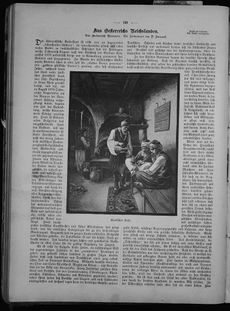
After the occupation of Bosnia and Herzegovina in 1878, the Austrian administration of Benjamin Kallay, the Austro-Hungarian governor of Bosnia and Herzegovina, officially endorsed "Bosniakhood" as the basis of a multi-confessional Bosnian nation that would include Christians as well as Muslims. The policy attempted to isolate Bosnia and Herzegovina from its irredentist neighbors (Orthodox Serbia and Catholic Croatia, but also the Muslims of the Ottoman Empire) and to negate the concepts of Serbian and Croatian nationhood which had already begun to take ground among the country's Orthodox and Catholic communities, respectively.[140][141][142] The notion of Bosnian nationhood was, however, firmly established only among the Bosnian Muslims, while fiercely opposed by Serb and Croat nationalists who were instead seeking to claim Bosnian Muslims as their own, a move that was rejected by most of them.[143]
After Kallay's death in 1903, the official policy slowly drifted towards accepting the three-ethnic reality of Bosnia and Herzegovina. Ultimately, the failure of Austro-Hungarian ambitions to nurture a Bosniak identity amongst the Catholic and Orthodox led to almost exclusively Bosnian Muslims adhering to it, with 'Bosniakhood' consequently adopted as a Bosnian Muslim ethnic ideology by nationalist figures.[144] The journal "Bošnjak" ("Bosniak") founded in 1891 by Mehmed-beg Kapetanović Ljubušak declared that Bosniaks (in the sense of all Bosnians) were neither Croats nor Serbs but a distinct, though related people. It remarked that: "whereas the Croats argue that the Orthodox are our greatest enemies and that Serbdom is the same as Orthodoxy, the Serbs wear themselves out calling our attention to some bogus history, by which they have Serbianized the whole world. We shall never deny that we belong to the South Slav family; but we shall remain Bosniaks, like our forefathers, and nothing else."[145]
In November 1881, upon introducing the Bosnian-Herzegovinian Infantry, the Austro-Hungarian government passed a Military Law (Wehrgesetz) imposing an obligation upon all Bosnian Muslims to serve in the Imperial Army, which led to widespread riots in December 1881 and throughout 1882; the Austrians appealed to the Mufti of Sarajevo, Mustafa Hilmi Hadžiomerović (born 1816) and he soon issued a Fatwa "calling on the Bosniaks to obey military Law."[146] Other important Muslim community leaders such as Mehmed-beg Kapetanović Ljubušak, later Mayor of Sarajevo, also appealed to young Muslim men to serve in the Habsburg military.
In 1903, the Gajret cultural society was established; it promoted Serb identity among the Slavic Muslims of Austria-Hungary (today's Bosnia and Herzegovina)[147] and viewed that the Muslims were Serbs lacking ethnic consciousness.[148] The view that Muslims were Serbs is probably the oldest of three ethnic theories among the Bosnian Muslims themselves.[149]
At the outbreak of World War I, Bosnian Muslims were conscripted to serve in the Austro-Hungarian army, some chose to desert rather than fight against fellow Slavs, whilst some Bosniaks attacked Bosnian Serbs in apparent anger after the assassination of Archduke Franz Ferdinand. Austro-Hungarian authorities in Bosnia and Herzegovina imprisoned and extradited approximately 5,500 prominent Serbs, 700–2,200 of whom died in prison. 460 Serbs were sentenced to death and a predominantly Bosniak[150][151][152] special militia known as the Schutzkorps was established and carried out the persecution of Serbs.[153] Neven Anđelić writes One can only guess what kind of feeling was dominant in Bosnia at the time. Both animosity and tolerance existed at the same time.[154]
يوغسلاڤيا والحرب العالمية الثانية
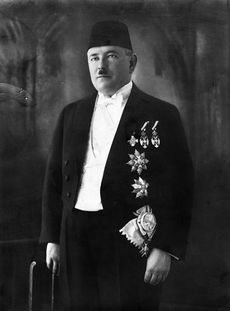
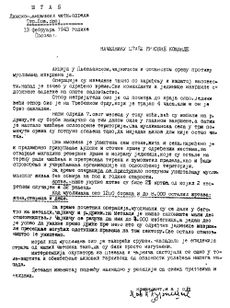
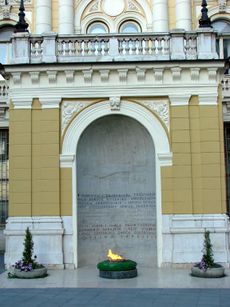
After World War I, the Kingdom of Serbs, Croats and Slovenes (later known as the Kingdom of Yugoslavia) was formed. In it, Bosniaks alongside Macedonians and Montenegrins were not acknowledged as a distinct ethnic group.[155] However; the first provisional cabinet included a Muslim.[156]
Politically, Bosnia and Herzegovina was split into four banovinas with Muslims being the minority in each.[157] After the Cvetković-Maček Agreement 13 counties of Bosnia and Herzegovina were incorporated into the Banovina of Croatia and 38 counties into the projected Serbian portion of Yugoslavia.[157] In calculating the division, the Muslims were discounted altogether[157] which prompted the Bosniaks into creating the Movement for the Autonomy of Bosnia-Herzegovina.[158] Moreover, land reforms proclaimed in the February 1919 affected 66.9 per cent of the land in Bosnia and Herzegovina. Given that the old landowning was predominantly Bosniak, the land reforms were resisted. Violence against Muslims and the enforced seizure of their lands shortly ensued. Bosniaks were offered compensation but it was never fully materialized. The regime sought to pay 255,000,000 dinars in compensation per a period of 40 years with an interest rate of 6%. Payments began in 1936 and were expected to be completed in 1975; however in 1941 World War Two erupted and only 10% of the projected remittances were made.[156]
During World War II, Bosniak elite and notables issued resolutions or memorandums in various cities that publicly denounced Croat-Nazi collaborationist measures, laws and violence against Serbs: Prijedor (23 September), Sarajevo (the Resolution of Sarajevo Muslims of 12 October), Mostar (21 October), Banja Luka (12 November), Bijeljina (2 December) and Tuzla (11 December). The resolutions condemned the Ustaše in Bosnia and Herzegovina, both for their mistreatment of Muslims and for their attempts at turning Muslims and Serbs against one another.[159] One memorandum declared that since the beginning of the Ustaše regime, that Muslims dreaded the lawless activities that some Ustaše, some Croatian government authorities, and various illegal groups perpetrated against the Serbs.[160] At this time several massacres against Bosniaks were carried out by Serb and Montenegrin Chetniks.[161][162][163] It is estimated that 75,000 Muslims died in the war,[164] although the number may have been as high as 86,000 or 6.8 percent of their pre-war population.[165] A number of Muslims joined the Yugoslav Partisan forces, "making it a truly multi-ethnic force".[154] In the entirety of the war the Yugoslav Partisans of Bosnia and Herzegovina were 23 percent Muslim.[166] Even so, Serb-dominated Yugoslav Partisans would often enter Bosniak villages killing Bosniak intellectuals and other potential opponents.[167] In February 1943 the Germans approved the 13th Waffen Mountain Division of the SS Handschar (1st Croatian) and began recruitment. Muslims composed approximately 12 percent of the civil service and armed forces of the Independent State of Croatia.[168]
During the socialist Yugoslav period, the Muslims continued to be treated as a religious group instead of an ethnic group.[169] In the 1948 census, Bosnia and Herzegovina's Muslims had three options in the census: "Serb-Muslim", "Croat-Muslim", and "ethnically undeclared Muslim".[169] In the 1953 census the category "Yugoslav, ethnically undeclared" was introduced and the overwhelming majority of those who declared themselves as such were Muslims.[169] Aleksandar Ranković and other Serb communist members opposed the recognition of Bosniak nationality.[170][171][172] Muslim members of the communist party continued in their efforts to get Tito to support their position for recognition.[170] The Bosniaks were recognized as an ethnic group in 1961 but not as a nationality and in 1964 the Fourth Congress of the Bosnian Party assured the Bosniaks the right to self-determination.[169] On that occasion, one of the leading communist leaders, Rodoljub Čolaković, stated that "our Muslim brothers" were equal with Serbs and Croats and that they would not be "forced to declare themselves as Serbs and Croats." He guaranteed them "full freedom in their national determination"[173] Following the downfall of Ranković, Tito changed his view and stated that recognition of Muslims and their national identity should occur.[170] In 1968 the move was protested in the Serb republic and by Serb nationalists such as Dobrica Ćosić.[170] In 1971, the Muslims were fully recognized as a nationality and in the census the option "Muslims by nationality" was added.[169]
الحرب البوسنية
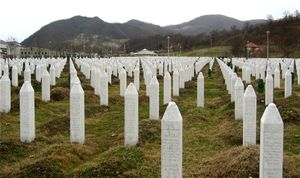
During the war, the Bosniaks were subject to ethnic cleansing and genocide. The war caused hundreds of thousands of Bosniaks to flee the nation. The war also caused many drastic demographic changes in Bosnia. Bosniaks were prevalent throughout almost all of Bosnia in 1991, a year before the war officially broke out. As a result of the war, Bosniaks in Bosnia were concentrated mostly in areas that were held by the Bosnian government during the war for independence. Today Bosniaks make up the absolute majority in Sarajevo and its canton, most of northwestern Bosnia around Bihać, as well as central Bosnia, Brčko District, Goražde, Podrinje and parts of Herzegovina.
At the outset of the Bosnian war, forces of the Bosnian Serb Army attacked the Bosnian Muslim civilian population in eastern Bosnia. Once towns and villages were securely in their hands, the Serb nationalist forces – military, police, the paramilitaries and, sometimes, even Serb villagers – applied the same pattern: houses and apartments were systematically ransacked or burnt down, civilians were rounded up or captured, and sometimes beaten or killed in the process. Men and women were separated, with many of the men massacred or detained in the camps. The women were kept in various detention centers where they had to live in intolerably unhygienic conditions, where they were mistreated in many ways including being raped repeatedly. Serb nationalist soldiers or policemen would come to these detention centres, select one or more women, take them out and rape them.[174][175]

The Serbs had the upper hand due to heavier weaponry (despite less manpower) that was given to them by the Yugoslav People's Army and established control over most areas where Serbs had relative majority but also in areas where they were a significant minority in both rural and urban regions excluding the larger towns of Sarajevo and Mostar. The Serb nationalist military and political leadership received the most accusations of war crimes by the International Criminal Tribunal for the former Yugoslavia (ICTY) many of which have been confirmed after the war in ICTY trials. Most of the capital Sarajevo was predominantly held by the Bosniaks. In the 44 months of the siege, terror against Sarajevo residents varied in intensity, but the purpose remained the same: inflict suffering on civilians to force the Bosnian authorities to accept Serb demands.[178] The VRS surrounded it (alternatively, the Serb forces situated themselves in the areas surrounding Sarajevo the so-called Ring around Sarajevo), deploying troops and artillery in the surrounding hills in what would become the longest siege in the history of modern warfare lasting nearly 4 years.
Throughout the country of Bosnia and Herzegovina, mosques and other islamic-structures were systematically destroyed by Serb and Croat armed forces. Among the most important losses were two mosques in Banja Luka which includes the Arnaudija and Ferhadija mosques.
اللغة
Most of the Bosniaks speak the Bosnian language, a South Slavic language of the Western South Slavic subgroup. Standard Bosnian is considered a variety of Serbo-Croatian, as mutually intelligible with the Croatian and Serbian languages which are all based on the Shtokavian dialect.[179][180] As such, Serbo-Croatian is an arbitrary term applied to a language spoken by several ethnic groups, including the Bosniaks, and is for various reasons controversial for native speakers who do not use the term.[181] As result, paraphrases such as Serbo-Croat-Bosnian (SCB) or Bosnian/Croatian/Serbian (BCS) tend to be used in English on occasion.
At the vernacular level, Bosniaks are more linguistically homogeneous than Serbs or Croats who also speak non-standard dialects beside Shtokavian. With respect to lexicon, Bosnian is characterized by its larger number of Ottoman Turkish (as well as Arabic and Persian) loanwords (called Orientalisms) in relation to the other Serbo-Croatian varieties.
The first official dictionary in the Bosnian language was published in 1992.[182] Church Slavonic is attested since at least the Kingdom of Bosnia; the Charter of Ban Kulin, written in Cyrillic, remains one of the oldest written South Slavic state documents.
The modern Bosnian language principally uses the Latin alphabet. However, Cyrillic (popularly termed Bosnian Cyrillic or Bosančica) was employed much earlier, as evident in medieval charters and on monumental tombstones (stećci) found scattered throughout the landscape. One of the most important documents is the Charter of Ban Kulin, which is regarded by Bosnian authors as one of the oldest official recorded documents to be written in Bosnian Cyrillic.[183][184] The use of Cyrillic was largely replaced by Arebica (Matufovica), a Bosnian variant of the Perso-Arabic script, upon the introduction of Islam in the 15th century, first among the elite, then amongst the public, and was commonly used up until the 19th century.[185]
الثقافة
فولكلور
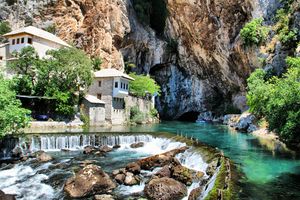

Like many other elements of Bosniak culture, Bosniak folklore is derived from European, Slavic and Ottoman influences, typically taking place prior to the 19th century. Generally, folklore also varies from region to region and city to city. Cities like Sarajevo and Mostar have a rich tradition all by themselves. Many man-made structures such as bridges and fountains, as well as natural sites, also play a significant role. At the very roots of the Bosniak folk soul are the national music genres called Sevdalinka and Ilahije.[بحاجة لمصدر]
There are many signs of pagan practices being carried over first into Christianity and later into Islam in Bosnia and Herzegovina – for example, the use of the mountain tops as a place of worship, and the name of pagan gods, such as Perun and Thor, that survived in oral tradition until the twentieth century.[188] Slavic traditions such as dragons, fairies and Vila, are also present. Fairies are often mentioned in Bosniak epics, poetry and folk songs. Well known are "gorske vile", or fairies from the mountains which dance on very green meadows. The cult of post-pagan Perun survived as the day of Elijah the Thunderer which was another important event for Bosnian Muslims. Muhamed Hadžijahić mentions: "In Muslim celebration of this holiday, we see traces of ancient pagan traditions related to cult of sun and rain." This tradition is among Bosnian Muslims known as Aliđun and among the Serbs as Ilijevdan. Pre-Slavic influences are far less common but nonetheless present. Certain elements of paleo-Balkan beliefs have also been found.[189] One of these traditions which could originate from the pre-Slavic era, is a Bosniak tradition of placing a horse's scull tied with a rope into river Bosna, to fight off drought.[190] Djevojačka pećina, or the Maiden's Cave, is a traditional place of the 'Rain Prayer' near Kladanj in north-eastern Bosnia, where Bosnian Muslims gather to pray for the soul of the maiden whose grave is said to be at the entrance to the cave. This tradition is of pre-Islamic origin and is a place where the followers of the medieval Bosnian Church held their pilgrimage. Another Bosnian Muslim place of pilgrimage is Ajvatovica near Prusac in central Bosnia and Herzegovina, which is the largest Islamic traditional, religious and cultural event in Europe, and is a place where devout Bosnian Muslims remember and give thanks to the founder of the holy site, Ajvaz-dedo, whose forty day prayers were heard by Allah and much needed water came out of a rock that had split open in a miraculous act. Even though the pilgrimage at Ajvatovica is a marking of the sixteenth-century conversion to Islam in Bosnia,[191] the tradition of this event is also linked to the pre-Islamic cult of St George's Day, and not to any of Hijri calendars. The green banners of Islam, takbir's and nasheed's are an integral part of the Ajvatovica's spirit. The procession is approaching shahid's cemetery from the time of Mehmed the Conqueror and prays with Sūrat al-Fātiḥah to martyrs of Bosnia. Other important Islamic holy sites are the khanqah's, dervish houses of prayer, where members of the Sufi mystical order gather around their leaders to engage in religious contemplation and rituals. One of the oldest is the 15th century Isa-beg's tekke (Isa-begova tekija) in Sarajevo.[بحاجة لمصدر]

National heroes are typically historical figures, whose lives and skills in battle are emphasized. These include figures such as Ban Kulin, the founder of medieval Bosnia who has come to acquire a legendary status. The historian William Miller wrote in 1921 that "even today, the people regard him as a favorite of the fairies, and his reign as a golden age.";[192] King Tvrtko I of Bosnia, King during the peak of the Bosnian kingdom; Gazi Husrev-beg, the second Ottoman governor of Bosnia who conquered many territories in Dalmatia, Northern Bosnia, and Croatia; Đerzelez Alija, an almost mythical character who even the Ottoman Sultan was said to have called "A Hero", Sokollu Mehmed Pasha (Mehmed-paša Sokolović), the Bosnian Ottoman Grand Vizier, whose heroism was depicted in the Bosnian poetry and folk songs and Husein Gradaščević, known as "The Dragon of Bosnia" who led the Bosnian uprising against the Ottomans in the 19th century.[بحاجة لمصدر]
العادات والتقاليد

The nation takes pride in the native melancholic folk songs sevdalinka, the precious medieval filigree manufactured by old Sarajevo craftsmen, and a wide array of traditional wisdom transmitted to newer generations by word of mouth, but in recent years written down in numerous books. Another prevalent tradition is "Muštuluk", whereby a gift is owed to any bringer of good news.
Rural folk traditions in Bosnia include the shouted, polyphonic ganga and ravne pjesme (flat song) styles, as well as instruments like a wooden flute and šargija. The gusle, an instrument found throughout the Balkans, is also used to accompany ancient South Slavic epic poems. The most versatile and skillful gusle-performer of Bosniak ethnicity was the Montenegrin Bosniak Avdo Međedović (1875–1953).
Probably the most distinctive and identifiably Bosniak of music, Sevdalinka is a kind of emotional, melancholic folk song that often describes sad subjects such as love and loss, the death of a dear person or heartbreak. Sevdalinkas were traditionally performed with a saz, a Turkish string instrument, which was later replaced by the accordion. However the more modern arrangement, to the derision of some purists, is typically a vocalist accompanied by the accordion along with snare drums, upright bass, guitars, clarinets and violins. Sevdalinkas are unique to Bosnia and Herzegovina. They arose in Ottoman Bosnia as urban Bosnian music with often oriental influences. In the early 19th century, Bosniak poet Umihana Čuvidina contributed greatly to sevdalinka with her poems about her lost love, which she sang. The poets which in large has contributed to the rich heritage of Bosniak people, include among others Derviš-paša Bajezidagić, Abdullah Bosnevi, Hasan Kafi Pruščak, Abdurrahman Sirri, Abdulvehab Ilhamija, Mula Mustafa Bašeskija, Hasan Kaimija, Ivan Franjo Jukić, Safvet-beg Bašagić, Musa Ćazim Ćatić, Mak Dizdar, as many prominent prose writers, such as Enver Čolaković, Skender Kulenović, Abdulah Sidran, Nedžad Ibrišimović, Zaim Topčić and Zlatko Topčić. Historical journals as Gajret, Behar and Bošnjak are some of the most prominent publications, which in a big way contributed to the preservation of the Bosniak identity in late 19th and early 20th century. The Bosnian literature, are generally known for their ballads; The Mourning Song of the Noble Wife of the Hasan Aga[193] (or better known as Hasanaginica), Smrt Omera i Merime (Omer and Merimas death) and Smrt braće Morića (The death of brothers Morić). Hasanaginica were told from generation to generation in oral form, until it was finally written and published in 1774 by an Italian anthropologist, Alberto Fortis, in his book Viaggio in Dalmazia ('A travel across Dalmatia').[194] Hasanaginica is considered as the one of the most beautiful ballads ever written, and were subsequently translated to German (Johann Wolfgang Goethe, 1775), English (Walter Scott, 1798), Russian (Aleksandr Pushkin, 1835), French (Prosper Mérimée, 1827, and Adam Mickiewicz, 1841) and other world's languages, becoming an integral part of the world literary heritage already in the 18th century.
الدين

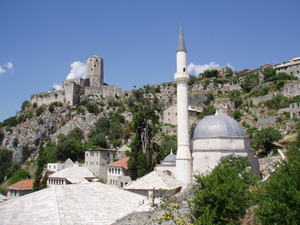
The Bosnian Muslims (Bosniaks) are traditionally[195][196][197] and predominantly Sunni Muslim.[198] Historically Sufism has also played a significant role among the Bosnian Muslims who tended to favor more mainstream Sunni orders such as the Naqshbandiyya, Rifa'i and Qadiriyya. There are also Bosniaks who can be categorized as Nondenominational Muslims and Cultural Muslims.[199] The Bosnian Islamic community has also been influenced by other currents within Islam than the one in Bosnia and Herzegovina prevailing Hanafi school, especially since the 1990s war.[200] The position of Sufism in Bosnia during the Ottoman era was legally the same as in other parts of the empire. Bosnian Sufis produced literature, often in oriental languages (Arabic and Turkish), although a few also wrote in Serbo-Croatian,[201] such as Abdurrahman Sirri (1785-1846/47) and Abdulwahāb Žepčewī (1773–1821). Another Sufi from Bosnia was Sheikh Hali Hamza, whose doctrines were considered to contradict the official interpretation of Islam. His supporters hamzevije formed a religious movement that is often described as a sect closely related to the tariqa of bajrami-melami.[202] Another prominent Bosniak Sufi was Hasan Kafi Pruščak, a Sufi thinker and the most prominent figure of the scientific literature and intellectual life of the 16th century Bosniaks.
In a 1998 public opinion poll, 78.3% of Bosniaks in the Federation of Bosnia and Herzegovina declared themselves to be religious.[203] Bosnian Muslims tend to often be described as moderate, secular and European-oriented compared to other Muslim groups.[204] Bosniaks have been described as "Cultural Muslims"[205] or "Progressive Muslims".[206]
Kjell Magnusson points out that religion played a major role in the processes that shaped the national movements and the formation of the new states in the Balkans after the Ottoman retreat, since the Ottomans distinguished peoples after their religious affiliations.[207] Although religion only plays a minor role in the daily lives of the ethnic groups of Bosnia and Herzegovina today, the following stereotypes are still rather current, namely, that the Serbs are Orthodox, the Croats Catholic and the Bosniaks Muslim; those native Bosnians who remained Christian and did not convert to Islam over time came to identify as ethnic Serb or Croat, helping to explain the apparent ethnic mix in Bosnia-Herzegovina. Still, however, there are a few individuals who violate the aforementioned pattern and practice other religions actively, often due to intermarriage.[208]
ألقاب العائلات والأسماء الأولى
Bosniak surnames, as is typical among the South Slavs from former Yugoslavia, often end with "ić" or "ović". This is a patronymic which basically translates to "son of" in English and plays the same role as "son" in English surnames such as Johnson or Wilson. What comes prior to this can often tell a lot about the history of a certain family.
Most Bosniak surnames follow a familiar pattern dating from the period of time that surnames in Bosnia and Herzegovina were standardized. Some Bosniak Muslim surnames have the name of the founder of the family first, followed by an Islamic profession or title, and ending with ić. Examples of this include Izetbegović (Son of Izet bey), and Hadžiosmanović ("son of Osman Hajji"). Other variations of this pattern can include surnames that only mention the name, such as Osmanović ("son of Osman"), and surnames that only mention profession, such as Imamović ("son of the Imam"). Some even mention religion as well such as "Muslimović" ("meaning son of a Muslim").
Quite a few Bosniak surnames do not necessarily have Islamic roots to them, but end in -ović and -ić; common amongst Slavic surnames. These surnames have probably stayed the same since medieval times, and typically come from old Bosnian nobility, or come from the last wave of converts to Islam. Examples of such surnames include Tvrtković and Kulenović.
There are also other surnames that do not end in ić at all. These surnames are typically derived from place of origin, occupations, or various others such factors in the family's history. Examples of such surnames include Zlatar ("goldsmith") Kovač ("blacksmith") or Kolar ("wheelwright").
There are some Bosniak surnames of foreign origin, indicating that the founder of the family came from a place outside Bosnia and Herzegovina. Many such Bosniak surnames have Albanian, Vlach, Turkic or Arab origins. Examples of such surnames include Arnautović (from Arnaut - Turkish ethnonym used to denote Albanians), Vlasić (from Vlach people), Tatarević (from Tatar people) and Arapović (from Arap - Turkish ethnonym used to denote Arabs). There are also some surnames which are presumed to be of pre-Slavic origin. Some examples of such surnames may be of Illyrian or Celtic origin, such as the surname Mataruga and Motoruga.[209]
Many Bosniak surnames are also common as Croatian and Serbian surnames: Puškar, Jašić, Sučić, Subašić, Begić, Hadžić.
Given names or first names among Bosniaks have mostly Arabic, or Turkish, roots such as Osman, Mehmed, Muhamed, Alija, Ismet, Kemal, Hasan, Ibrahim, Mustafa, Ahmed, Husein, Hamza, Haris, Halid, Refik, Tarik, Faruk, Abdulah, Amer, Sulejman, Mahir, Enver, and many others. South Slavic given names such as "Zlatan" or "Zlatko" are also present primarily among non-religious Bosniaks. What is notable however is that due to the structure of the Bosnian language, many of the Muslim given names have been altered to create uniquely Bosniak given names. Some of the Oriental given names have been shortened. For example: Huso short for Husein, Ahmo short for Ahmed, Meho short for Mehmed. One example of this is that of the Bosniak humorous characters Mujo and Suljo, whose given names are actually Bosniak short forms of Mustafa and Sulejman. More present still is the transformation of given names that in Arabic or Turkish are confined to one gender to apply to the other sex. In Bosnian, simply taking away the letter "a" changes the traditionally feminine "Jasmina" into the popular male name "Jasmin". Similarly, adding an "a" to the typically male "Mahir" results in the feminine "Mahira".[210]
الرموز


The traditional symbol of the Bosniak people is a fleur-de-lis coat of arms, decorated with six golden lilies, also referred to Lilium bosniacum, a native lily of the region.[211] This Bosniak national symbol is derived from the coat of arms of the medieval Kingdom of Bosnia, and was particularly used in the context of the rule of Bosnian King Tvrtko I of Bosnia. According to some sources, the Bosnian coat of arms, with six golden lilies, originated from the French descended Capetian House of Anjou.[212] The member of this dynasty, Louis I of Hungary, was married to Elizabeth of Bosnia, daughter of the ban Stephen II of Bosnia, with Tvrtko I consequently embracing the heraldic lily as a symbol of the Bosnian royalty in token of the familial relations between the Angevins and the Bosnian royal family. It is also likely that the Bosnians adopted, or were granted, the fleur-de-lis on their coat of arms as a reward for taking the Angevin side.
This emblem was revived in 1992 as a symbol of Bosnian nationhood and represented the flag of the Republic of Bosnia and Herzegovina between 1992 and 1998. Although the state insignia was replaced in 1999 on request of the other two ethnic groups, the flag of the Federation of Bosnia and Herzegovina still features a fleur-de-lis alongside the Croatian chequy. The Bosnian fleur-de-lis also appears on the flags and arms of many cantons, municipalities, cities and towns. It is still used as official insignia of the Bosniak regiment of the Armed Forces of Bosnia and Herzegovina.[213] The Fleur-de-lis can also be commonly found as ornament in mosques and on Muslim tombstones. Swedish historian Senimir Resić states that the emblem of the fleur-de-lis (symbolizing the Christian Middle Ages) which become a national symbol of Bosniaks in 1992, was, in that time of war and Islamophobia, intended to draw attention to the Western world of the Christian and medieval European past of the Bosnian Muslims.[214]
Another Bosniak flag dates from the Ottoman era, and is a white crescent moon and star on a green background. The flag was also the symbol of the short-lived independent Bosnia in the 19th century and of the Bosnian uprising against the Turks led by Husein Gradaščević.
التوزيع الجغرافي
البلقان
National consciousness has also spread to most Bosniaks in the neighboring countries and increasingly around the world after the Bosnian war. The largest number of Bosniaks outside Bosnia and Herzegovina are found in Serbia and Montenegro (specifically in the Sandžak region). The city of Novi Pazar is home to the largest Bosniak population outside Bosnia. Another 40,000 Bosniaks are found in Croatia and 38,000 in Slovenia. However, some of them still identify themselves as "Muslims" or "Bosnians", according to latest estimates. In Macedonia there are estimated to be about 17,000 Bosniaks.
Due to warfare and ethnic cleansing during the war in Bosnia and Herzegovina, a large part of the world's estimated 3–4 million Bosniaks are found in countries outside the Balkans. The highest Bosniak populations outside the ex-Yugoslavian states are found in the United States, Sweden, Austria, Germany, Switzerland, Australia, Canada, and Turkey. Prior generations of Bosniak immigrants to some of these countries have by now been mostly integrated.
In Western countries, a large majority of the Bosniaks are war refugees who only arrived in these countries beginning in the 1990s. They still speak Bosnian, and maintain cultural and religious communities, visit their mother country regularly and send remittances to families back home.
الشتات
There is a significant Bosniak diaspora in Europe, Turkey as well as in North America in such countries as the United States and Canada.
- Turkey: The community in Turkey has its origins predominantly in the exodus of Muslims from the إيالة البوسنة taking place in the 19th and early 20th century as result of the collapse of Ottoman rule in the Balkans. According to estimates commissioned in 2008 by the National Security Council of Turkey as many as 2 million Turkish citizens are of Bosniak ancestry.[215] Bosniaks mostly live in the Marmara Region, in the north-west. The biggest Bosniak community in Turkey is in Istanbul; the borough Yenibosna (formerly Saraybosna, after Sarajevo), saw rapid migration from the Ottoman Balkans after the founding of the Republic of Turkey.[216] There are notable Bosniak communities in İzmir, Karamürsel, Yalova, Bursa and Edirne.
- United States: The first Bosnian arrivals came around the 1860s. According to a 2000 estimate, there are some 350,000 Americans of Bosnian ancestry.[217] Bosniaks were early leaders in the establishment of Chicago's Muslim community. In 1906, they established Džemijetul Hajrije (The Benevolent Society) of Illinois to preserve the community's religious and national traditions as well as to provide mutual assistance for funerals and illness. The organization established chapters in Gary, Indiana, in 1913, and Butte, Montana, in 1916, and is the oldest existing Muslim organization in the United States. There are numerous Bosniak cultural, sport and religious associations. Bosnian-language newspapers and other periodicals are published in many states; the largest in the United States is the St. Louis based newspaper "Sabah".
- Canada: According to the 2001 census, there are 25,665 people who claimed Bosnian ancestry.[218] A large majority of Bosnian Canadians emigrated to Canada during and after the Bosnian War, although Bosnian migration dates back to the 19th century.[218] Traditional centers of residence and culture for people from Bosnia and Herzegovina are in Toronto, Montreal and Vancouver. Numerous Bosniak cultural, sport and religious associations, Bosnian-language newspapers and other periodicals are published in many states. The largest Bosnian organisation in Canada is the Congress of North American Bosniaks.[219]
انظر أيضاً
قراءات أخرى
- Bosniak Book written thirteen years after the end of War World I by Hans Fritz, in honor of Bosniak soldiers. Translation into Bosnian language by Zijad Sehic.
المراجع
- ^ CIA Fact Book
- ^ Germans and foreigners with an immigrant background
- ^ Census 2002
- ^ Austrian Figures 2006
- ^ By Ancestry
- ^ Census 2006 by birth
- ^ Kosovar census
- ^ Montenegrin census 2003
- ^ 2005 Figures
- ^ Census 2002
- ^ By Ethnic origin
- ^ Cro Census 2001
- ^ Macedonian Census 2002
- ^ By ancestry
- ^ Figures 2008
- ^ Belgium figures
- ^ Census 2006
- ^ أ ب "Bosniak". Oxford English Dictionary (3rd ed.). Oxford University Press. September 2005.
{{cite book}}: External link in|chapterurl=|chapterurl=ignored (|chapter-url=suggested) (help) - ^ Charles Knight (1836). The Penny Cyclopaedia. Vol. V. London: The Society for the Diffusion of Useful Knowledge. p. 231.
- ^ "Bosnian". Oxford English Dictionary (3rd ed.). Oxford University Press. September 2005.
{{cite book}}: External link in|chapterurl=|chapterurl=ignored (|chapter-url=suggested) (help) - ^ ed. Elliott Robert Barkan (2013). Immigrants in American History: Arrival, Adaptation, and Integration: Bosniaks (Muslims) and Bosniak Americans, 1870–1940. ABC-CLIO. p. 229. ISBN 9781598842197. Retrieved 17 November 2013.
{{cite book}}:|author=has generic name (help) - ^ Pål Kolstø (2005). Myths and boundaries in south-eastern Europe. Hurst & Co., p. 120; ..medieval Bosnia was a country of one people, of the single Bosnian people called the Bošnjani, who belonged to three confessions.
- ^ Vjekoslav Klaić (1882). Poviest Bosne do propasti kraljevstva. Troškom piščevim. p. 278.; Bošnjakom isti pradjedovi bili, koji i Poljakom (the ancestors of the Bosniak, same as those of the Pole)
- ^ Jędrzej Moraczewski (1844). Dzieje Rzeczypospolitej Polskiej. Vol. II. Poznań: Nakładem i drukiem N. Kamieńskiego, 1844. p. 259.
- ^ Muhamed Hadžijahić – Od tradicije do identiteta: geneza nacionalnog pitanja bosanskih Muslimana, 1974, p. 7; "Kralj Stjepan Tvrtković poslao je odmah ovome kralju "sjajno poslanstvo odličnih muževa", veli Vladislavov biograf pa nastavlja: "Ovi su, ispričavši porijeklo svoga plemena isticali, da su Bošnjacima bili isti pradjedovi kao i Poljacima te da im je zajednički jezik kojim govore i da se radi te srodnosti jezika i porijekla njihov kralj Tvrtko II živo raduje, što je Vladislav – kako se je pronio glas – sretan u svojim pothvatima"
- ^ Hrvatska enciklopedija (LZMK) – Bošnjaci
Bošnjaci, naziv za podanike bosanskih vladara u predosmansko doba, podanike sultana u osmansko doba, odnosno današnji naziv za najbrojniji od triju konstitutivnih naroda u BiH. Bošnjak, kao i stariji naziv Bošnjanin (u lat. vrelima Bosnensis), prvotno je ime koje označuje pripadništvo srednjovjekovnoj bosanskoj državi.
- ^ Malcolm 1996, p. 10.
- ^ أ ب Indira Šabić (2014). Onomastička analiza bosanskohercegovačkih srednjovjekovnih administrativnih tekstova i stećaka (PDF). Osijek: Sveučilište Josipa Jurja Strossmayera. pp. 165–167.
- ^ Džavid Haverić (2009). History of the Bosnian Muslim Community in Australia: Settlement Experience in Victoria (PDF). Institute for Community, Ethnicity and Policy Alternatives, ICEPA, Victoria University. p. 17.
- ^ Salmedin Mesihović (2014). Ilirike. Sarajevo: Filozofski fakultet u Sarajevu. p. 80. ISBN 9789958031106.
- ^ Salmedin Mesihović (2010). AEVVM DOLABELLAE – DOLABELINO DOBA. Vol. XXXIX. Sarajevo: Centar za balkanološka ispitivanja, Akademija nauka i umjetnosti. p. 10.
- ^ أ ب William Miller (1921). Essays on the Latin Orient. Cambridge. p. 464. ISBN 9781107455535.
{{cite book}}: CS1 maint: location missing publisher (link) - ^ Denis Bašić (2009). The roots of the religious, ethnic, and national identity of the Bosnian-Herzegovinan Muslims. University of Washington. p. 56. ISBN 9781109124637.
- ^ أ ب Indira Šabić (2014). Onomastička analiza bosanskohercegovačkih srednjovjekovnih administrativnih tekstova i stećaka (PDF). Osijek: Sveučilište Josipa Jurja Strossmayera. p. 165.
- ^ Muhsin Rizvić (1996). Bosna i Bošnjaci: Jezik i pismo (PDF). Sarajevo: Preporod. p. 6.
- ^ Joachim Lelewel (1852). Géographie du moyen âge. Vol. 3–4. Ve et J. Pilleit. p. 43.
- ^ Johann Kaspar Zeuss (1837). Die Deutschen und die Nachbarstämme. Ignaz Joseph Lentner. p. 615.
- ^ Marko Vego (1982). Postanak srednjovjekovne bosanske države. "Svjetlost", OOUR Izdavačka djelatnost. pp. 20–21.
- ^ Muhamed Hadžijahić (2004). Povijest Bosne u IX i X stoljeću. p. 113 & 164–165.
- ^ Mustafa Imamović. Historija Bošnjaka. Preporod. pp. 24–25.
- ^ Evlija Čelebi, Putopis: odlomci o jugoslavenskim zemljama, (Sarajevo: Svjetlost, 1967), p. 120.
- ^ Donia & Fine 1994, p. 73: "Moreover, the translation of one's religious denomination to Serb or Croat nationality also had no relevance to the area's population, since Bosnians before the nineteenth century had not described themselves as either Serbs or Croats"
- ^ Shatzmiller, Maya (2002). Islam and Bosnia: Conflict Resolution and Foreign Policy in Multi-Ethnic States. McGill-Queen's Press. p. 32. ISBN 978-0-7735-2413-2.
- ^ Philip Emil Muehlenbeck, ed. (2012). Religion and the Cold War: A Global Perspective. Vanderbilt University Press. p. 183. ISBN 9780826518521.
- ^ أ ب Dimitrovova, Bohdana. "Bosniak or Muslim? Dilemma of one Nation with two Names Archived 2009-09-16 at the Wayback Machine." Southeast European Politics, Vol. II, No. 2. October 2001.
- ^ Bajrami, Kerim. "Reagovanje na članak: Uz 90 godina od slavne Bitke za Čanakkale Archived 2006-03-25 at the Wayback Machine." Našagora.info.
- ^ J. Krieger (ed) (2001). The Oxford Companion to Politics of the World 2nd. ed. Oxford University Press. p. 476. ISBN 9780195117394.
{{cite book}}:|author=has generic name (help) - ^ Velikonja, Mitja (2003). Religious Separation and Political Intolerance in Bosnia-Herzegovina. Texas A&M University Press. p. 134. ISBN 978-1-58544-226-3.
- ^ Kostic, Roland (2007). Ambivalent Peace: External Peacebuilding, Threatened Identity and Reconciliation in Bosnia and Herzegovina. Uppsala University; Report No. 78, Department of Peace and Conflict Research and the Programme for Holocaust and Genocide Studies. p. 65. ISBN 9789150619508.
- ^ Philip Emil Muehlenbeck, ed. (2012). Religion and the Cold War: A Global Perspective. Vanderbilt University Press. p. 184. ISBN 9780826518521.
- ^ Horvat, Ana (March 2010). "AUTOHTONE NACIONALNE MANJINE I USTAVNE PROMJENE 2009. – 2010" (in Croatian). Faculty of Law of the University of Zagreb. p. 574. Archived from the original on 2014-07-14. Retrieved 2014-06-17.
{{cite web}}: CS1 maint: unrecognized language (link) - ^ أ ب Imamović, Mustafa (1996). Historija Bošnjaka. Sarajevo: BZK Preporod. ISBN 9958-815-00-1
- ^ Bringa, Tone (1995). Being Muslim the Bosnian Way. Princeton University Press. p. 13. ISBN 978-0691001753.
- ^ Doubt, Keith (2006). Understanding Evil: Lessons from Bosnia. Fordham University Press. pp. 129–30. ISBN 9780823227006.
- ^ Velikonja, Mitja (2003). Religious Separation and Political Intolerance in Bosnia-Herzegovina. Texas A&M University Press. pp. 8, 13. ISBN 9781585442263.
- ^ Donia & Fine 1994, p. 8.
- ^ Donia & Fine 1994, p. 7.
- ^ Donia & Fine 1994, p. 16.
- ^ أ ب John VA Fine (1994-04-28). "What is a Bosnian?". London Review of Books. London Review of Books; Vol.16 No.8. 28 April 1994. pp. 9–10. Archived from the original on 13 January 2014.
- ^ Hamourtziadou 2002.
- ^ أ ب Donia & Fine 1994, p. ?.
- ^ Hupchick, Dennis P. The Balkans from Constantinople to Communism, pp. 28–30. Palgrave Macmillan (2004)
- ^ T. E. Gregory, A History of Byzantium. Wiley- Blackwell, 2010. p. 169
- ^ Fine 1991, pp. 37-38.
- ^ Fine 1991, p. ?.
- ^ Heather, Peter (2010). Empires and Barbarians: The Fall of Rome and the Birth of Europe. Oxford University Press. ISBN 9780199752720., pp. 404–406
- ^ أ ب ت Fine 1991, p. 53.
- ^ Pinson 1994, p. 19.
- ^ أ ب Malcolm 1995, p. 71.
- ^ Gábor Ágoston; Alan Masters (2009). Encyclopedia of the Ottoman Empire. Infobase Publishing. p. 146.
- ^ أ ب ت Imamović, Mustafa (1997). Historija Bošnjaka: Osmanska država i islamska civilizacija. Bošnjačka zajednica kulture Preporod, Matični odbor. Archived from the original on 2017-02-24., pp. 199.
- ^ أ ب Kovacevic, Lejla; Tambets, Kristiina; Ilumäe, Anne-Mai; Kushniarevich, Alena; Yunusbayev, Bayazit; Solnik, Anu; Bego, Tamer; Primorac, Dragan; Skaro, Vedrana (2014-08-22). "Standing at the Gateway to Europe - The Genetic Structure of Western Balkan Populations Based on Autosomal and Haploid Markers". PLOS ONE. 9 (8): e105090. Bibcode:2014PLoSO...9j5090K. doi:10.1371/journal.pone.0105090. ISSN 1932-6203. PMC 4141785. PMID 25148043.
{{cite journal}}: CS1 maint: unflagged free DOI (link) - ^ Kushniarevich, A; Utevska, O; Chuhryaeva, M; et al. (2015). "Genetic Heritage of the Balto-Slavic Speaking Populations: A Synthesis of Autosomal, Mitochondrial and Y-Chromosomal Data". PLOS One. 10 (9): e0135820. doi:10.1371/journal.pone.0135820. PMC 4558026. PMID 26332464.
{{cite journal}}: CS1 maint: unflagged free DOI (link) - ^ Novembre, J; Johnson, T; Bryc, K; et al. (2008). "(November 2008), "Genes mirror geography within Europe". Nature. 456 (7218): 98–101. doi:10.1038/nature07331. PMC 2735096. PMID 18758442.
- ^ Peričić, M; Barać Lauc, L; Martinović, I; et al. (2005). "High-Resolution Phylogenetic Analysis of Southeastern Europe Traces Major Episodes of Paternal Gene Flow Among Slavic Populations" (PDF). Molecular Biology and Evolution. 22 (10): 1966. doi:10.1093/molbev/msi185. PMID 15944443.
- ^ Dogan, S; Babic, N; Gurkan, C; et al. (2016). "Y-chromosomal haplogroup distribution in the Tuzla Canton of Bosnia and Herzegovina: A concordance study using four different in silico assignment algorithms based on Y-STR data". Journal HOMO of Comparative Human Biology. 67 (6): 471–483. doi:10.1016/j.jchb.2016.10.003. PMID 27908490.
- ^ Marjanović, D; Fornarino, S; Montagna, S; et al. (2005). "The peopling of modern Bosnia-Herzegovina: Y-chromosome haplogroups in the three main ethnic groups". Annals of Human Genetics. 69 (Pt 6): 757–63. doi:10.1111/j.1529-8817.2005.00190.x. PMID 16266413.
- ^ Malyarchuk, B.A.; Grzybowski, T.; Derenko, M. V.; et al. (2003). "Mitochondrial DNA Variability in Bosnians and Slovenes". Annals of Human Genetics. 67 (5): 412–425. doi:10.1046/j.1469-1809.2003.00042.x.
- ^ Fine 1991, p. 32.
- ^ أ ب ت ث Kaimakamova & Salamon 2007, p. 244.
- ^ Basic 2009, p. 123.
- ^ أ ب ت Bulić 2013, p. 157.
- ^ Fine 1991, p. 202.
- ^ Donia & Fine 1994, pp. 14–16.
- ^ Anto Babić, Iz istorije srednjovjekovne Bosne, (Sarajevo:Svjetlost,1972), p. 64.
- ^ Pinson 1994, pp. 4–8.
- ^ Velikonja 2003, pp. 39-30.
- ^ Pinson 1994, pp. 6–8.
- ^ Malcolm 1996, p. 12.
- ^ Miller, Timothy S.; Nesbitt, John W. (1995), Peace and war in Byzantium: essays in honor of George T. Dennis, S.J, Catholic University of America Press, pp. 189–191
- ^ Ljubez, Bruno (2009), Jajce Grad: prilog povijesti posljednje bosanske prijestolnice (in Croatian), HKD Napredak, pp. 148–150
- ^ Babinger, Franz (1992). Mehmed the Conqueror and His Time. USA: Princeton University Press. pp. 163, 222–224.
- ^ Marulianum Center for study of Marko Marulić and his literary activity. – Retrieved on 28 November 2008
- ^ Slavica Jakelić (2010). Collectivistic religions: Religion, Choice, and Identity in Late Modernity. Ashgate Publishing Company. ISBN 9781409492498., p. 103.
- ^ Velikonja, Mitja (2003). Religious Separation and Political Intolerance in Bosnia-Herzegovina. Texas A&M University Press. ISBN 9781603447249., p. 56
- ^ Velikonja, Mitja (2003). Religious Separation and Political Intolerance in Bosnia-Herzegovina. Texas A&M University Press. ISBN 9781603447249., p. 66
- ^ Mustafa Imamović – Historija Bošnjaka
- ^ Zlatar, Zdenko (2007). The Poetics of Slavdom: The Mythopoeic Foundations of Yugoslavia, Vol. 2. Peter Lang. ISBN 9780820481357., p. 580
- ^ Arnold (1913) p. 198—200
- ^ Miloš Mladenović, The Osmanli Conquest and the Islamization of Bosnia, in Slavic and East-European Studies, III/4, Winter 1958-1959, pp. 219-226.
- ^ Paul Rycaut (1686). The history of the present state of the Ottoman Empire., pp. 248.
- ^ Balić, Smail (1973). Kultura Bošnjaka: Muslimanska Komponenta. Vienna. pp. 32–34.
{{cite book}}: CS1 maint: location missing publisher (link) - ^ Čišić, Husein. Razvitak i postanak grada Mostara. Štamparija Mostar. p. 22.
- ^ Stratton, Arthur (1972). Sinan. New York: Charles Scribner's Sons. ISBN 978-0-684-12582-4.
- ^ Malcolm, Noel (1996). Bosnia: a Short History. London: Papermac. pp. 67–68. ISBN 978-0-333-66215-1.
- ^ Velikonja, Mitija, Religious Separation and Political Intolerance in Bosnia-Herzegovina, Pp. 56.
- ^ Prof. Giacobelli, Francesco, Arthur J. Evans in Bosnia and Herzegovina during the 1875 revolt, Pp. 27-28, Anno Accademico 2011 / 2012, Università degli Studi di Padova
- ^ N. Berber, op. cit., p. 53
- ^ Prof. Giacobelli, Francesco, Arthur J. Evans in Bosnia and Herzegovina during the 1875 revolt, Pp. 121–122, Anno Accademico 2011 / 2012, Università degli Studi di Padova.
- ^ A. Evans, op. cit., p. 89-90
- ^ Riedlmayer, Andras (1993).A Brief History of Bosnia-Herzegovina Archived 2006-06-18 at the Wayback Machine. The Bosnian Manuscript Ingathering Project.
- ^ Donia & Fine 1994, p. 38.
- ^ Malcolm 1996.
- ^ Velikonja 2003, p. 74.
- ^ Prof. Giacobelli, Francesco, Arthur J. Evans in Bosnia and Herzegovina during the 1875 revolt, Pp. 68-69, Anno Accademico 2011 / 2012, Università degli Studi di Padova
- ^ B. Jelavich, op. cit., p. 350
- ^ English translation: Leopold Ranke, A History of Serbia and the Serbian Revolution. Translated from the German by Mrs Alexander Kerr (London: John Murray, 1847)
- ^ L. S. Stavrianos, The Balkans since 1453 (London: Hurst and Co., 2000), p. 248–250.
- ^ Soeren Keil (15 April 2016). Multinational Federalism in Bosnia and Herzegovina. Routledge. pp. 58–. ISBN 978-1-317-09343-5.
- ^ Kruševac, Todor, "Ivan Frano Jukić," in Godišnjak Istoriskog društva, (Sarajevo, 1956), p. 171-184
- ^ Okey, Robin (2007). Taming Balkan Nationalism: The Habsburg 'Civilizing Mission' in Bosnia 1878–1914. Oxford University Press. p. 14. ISBN 978-0-19-921391-7.
- ^ Ivan Franjo Jukić, Zemljopis i povjestnica Bosne, pp. 142–143, fn. 4
- ^ Muhamed Hadžijahić (1974). Od tradicije do identiteta – geneza nacionalnog pitanja bosanskih muslimana. Sarajevo: Muslimanska nadklada, Putokaz. p. 43. Archived from the original on 2016-03-05.
- ^ Muhamed Hadžijahić (1974). Od tradicije do identiteta – geneza nacionalnog pitanja bosanskih muslimana. Sarajevo: Muslimanska nadklada, Putokaz. p. 243. Archived from the original on 2016-03-05.
- ^ Conrad Malte-Brun (1829). Universal Geography. Vol. VI. Boston: Quebec Mechanics' institute. p. 215.
- ^ Mažuranić, Matija, Pogled u Bosnu ..., pp. 52–53, emphasis in Italics from Basic 2009
- ^ Basic 2009, p. ?.
- ^ M. Massieu de Clerval, "Rapport adresse a Son Excellence Monsieur le Ministre de I'instruction publique sur une mission en Bosnie, accomplie en 1855", in Archives des mission scientifique and litteraires, vol. 5, (Paris, 1855, p. 35); the original inaccessible.
- ^ Ivan Frano Jukić as Slavoljub Bošnjak (1851). Zemljopis i poviestnica Bosne. Zagreb. Retrieved 13 January 2012.
{{cite book}}: CS1 maint: location missing publisher (link) - ^ "Kratka povjest kralja bosanskih". Dobra knjiga. Archived from the original on 21 October 2013. Retrieved 13 January 2012.
- ^ Filip Lastrić, Pregled starina Bosanske provincije / comments written by Andrija Zirdum; from the Latin and Italian Ignacije Gavran and Simun Šimić, (Sarajevo, Zagreb: Synopsis, 2003), p. 148-149
- ^ Bašić 2009, p. 323.
- ^ Malcolm 1994, p. ?.
- ^ أ ب Pinson 1994, p. 81.
- ^ Karčić 1999:148-9)
- ^ Džavid Haverić, History of the Bosnian Muslim Community in Australia: Settlement Experience in Victoria, Institute for Community, Ethnicity and Policy Alternatives, ICEPA, Victoria University, p. 27
- ^ Neumayer, Christoph. The Emperor's Bosniaks, ISBN 978-3-902526-17-5. p. 104.
- ^ Wheatcroft, Andrew (2009-04-28). The Enemy at the Gate: Habsburgs, Ottomans and the Battle for Europe, p. 264. ISBN 9780786744541.
- ^ Velikonja 2003, pp. 130-135.
- ^ Donia & Fine 1994, p. 73.
- ^ Eastern Europe and the Commonwealth of Independent States. Routledge. 1999. p. 214. ISBN 978-1-85743-058-5.
- ^ Publications, Europa (2003). Central and South-Eastern Europe 2004, Volume 4, p 110. ISBN 9781857431865.
- ^ Jack David Eller. From culture to ethnicity to conflict: an anthropological perspective on international ethnic conflict. University of Michigan Press, 1999. Pp. 262.
- ^ Jack David Eller. From culture to ethnicity to conflict: an anthropological perspective on international ethnic conflict. University of Michigan Press, 1999. Pp. 263.
- ^ Karčić 1995, pp. 118–119.
- ^ Allworth 1994, p. 125.
- ^ Allworth 1994, p. 126.
- ^ Allworth 1994, p. 116.
- ^ Tomasevich 2001, p. 485
The Bosnian wartime militia (Schutzkorps), which became known for its persecution of Serbs, was overwhelmingly Muslim.
- ^ John R. Schindler (2007). Unholy Terror: Bosnia, Al-Qa'ida, and the Rise of Global Jihad. Zenith Imprint. p. 29. ISBN 978-1-61673-964-5.
- ^ Velikonja 2003, p. 141
- ^ Herbert Kröll (28 February 2008). Austrian-Greek encounters over the centuries: history, diplomacy, politics, arts, economics. Studienverlag. p. 55. ISBN 978-3-7065-4526-6. Retrieved 1 September 2013.
... arrested and interned some 5.500 prominent Serbs and sentenced to death some 460 persons, a new Schutzkorps, an auxiliary militia, widened the anti-Serb repression.
- ^ أ ب Andjelic, Neven (2003). Bosnia-Herzegovina: The End of a Legacy. Frank Cass. pp. 13–14, 17. ISBN 978-0-7146-5485-0.
- ^ Klemenčič, Matjaž (2004). The Former Yugoslavia's Diverse Peoples: A Reference Sourcebook. ABC-CLIO. p. 113. ISBN 978-1-57607-294-3.
- ^ أ ب Ramet 2006, p. 49.
- ^ أ ب ت Banac, Ivo (1988). The National Question in Yugoslavia: Origins, History, Politics. Cornell University Press. p. 376. ISBN 978-0-8014-9493-2.
- ^ Djokić, Dejan (2003). Yugoslavism: Histories of a Failed Idea, 1918–1992. University of Wisconsin Press. p. 104. ISBN 978-1-85065-663-0.
- ^ Hoare, Marko Attila (2007). The History of Bosnia: From the Middle Ages to the Present Day. SAQI. p. 227. ISBN 978-0-86356-953-1.
- ^ Tomasevich 2001, p. 492.
- ^ Malcolm 1996, p. 188.
- ^ Lampe, John R. (2000). Yugoslavia as History. Cambridge University Press. pp. 206, 209, 210. ISBN 978-0-521-77401-7.
- ^ Glenny, Misha (2001). The Balkans: Nationalism, War & the Great Powers, 1804–1999. Penguin Books. pp. 494–495. ISBN 978-0-14-023377-3.
- ^ Malcolm 1994, p. 192.
- ^ Pinson 1994, p. 143.
- ^ Hoare, Marko Attila (2006). Genocide and Resistance in Hitler's Bosnia: The Partisans and the Chetniks. Oxford University Press. p. 10. ISBN 978-0-19-726380-8.
- ^ Malcolm 2002, p. 157.
- ^ Velikonja 1992, p. 179.
- ^ أ ب ت ث ج Banac, Ivo (1988). The National Question in Yugoslavia: Origins, History, Politics. pp. 287–288.
- ^ أ ب ت ث Bećirević, Edina (2014). Genocide on the Drina River. Yale University Press. pp. 24–25. ISBN 9780300192582.
{{cite book}}: Invalid|ref=harv(help) - ^ Ramet, Sabrina P. (2006). The three Yugoslavias: State-building and Legitimation, 1918–2005. Indiana University Press. p. 286. ISBN 0-253-34656-8. Retrieved 28 September 2019.
- ^ Sancaktar, Caner (1 April 2012). "Historical Construction and Development of Bosniak Nation". Alternatives: Turkish Journal of International Relations. 11: 1–17. Retrieved 28 September 2019.
- ^ Duraković, Prokletstvo Muslimana, Pp. 165.
- ^ "ICTY: Blagojevic and Jokic judgement" (PDF). Archived (PDF) from the original on 2012-03-30.
- ^ "ICTY: Kunarac, Kovač and Vuković judgement" (PDF). Archived (PDF) from the original on 2011-08-06.
- ^ City.ba: Sarajevo Red Line – 11541 – In Bosnian[cited April 04, 2012] Archived ديسمبر 21, 2012 at the Wayback Machine
- ^ E-News: Red Line for the victims of the Siege of Sarajevo – In Bosnian[cited April 04, 2012] Archived يوليو 1, 2012 at the Wayback Machine
- ^ "ICTY: Greatest suffering at least risk". Archived from the original on 2007-10-13.
- ^ Benjamin W. Fortson IV, Indo-European Language and Culture: An Introduction, 2nd ed. (2010, Blackwell), pg. 431, "Because of their mutual intelligibility, Serbian, Croatian, and Bosnian are usually thought of as constituting one language called Serbo-Croatian."
- ^ Václav Blažek, "On the Internal Classification of Indo-European Languages: Survey" retrieved 20 Oct 2010 Archived 2012-02-04 at the Wayback Machine, pp. 15–16.
- ^ Radio Free Europe – Serbian, Croatian, Bosnian, Or Montenegrin? Or Just 'Our Language'? Archived 2010-11-05 at the Wayback Machine Živko Bjelanović: Similar, But Different, Feb 21, 2009, accessed Oct 8, 2010
- ^ Peter Jordan (1989). Atlas Ost- und Südosteuropa: Bevölkerung aktuelle Karten zu Ökologie, Bevölkerung und Wirtschaft. Vol. 2. Österreichisches Ost- und Südosteuropa-Institut. p. 21. ISBN 978-3-443-28526-5.
- ^ Mahmutćehajić, Rusmir (2003). Sarajevo essays: politics, ideology, and tradition. Albany, NY: State University of New York Press. p. 252. ISBN 9780791456378.
- ^ Balić, Smail (1978). Die Kultur der Bosniaken, Supplement I: Inventar des bosnischen literarischen Erbes in orientalischen Sprachen. Vienna: Adolf Holzhausens, Vienna. p. 111.
- ^ Dobraća, Kasim (1963). Katalog Arapskih, Turskih i Perzijskih Rukopisa (Catalogue of the Arabic, Turkish and Persian Manuscripts in the Gazihusrevbegova Library, Sarajevo). Sarajevo.
{{cite book}}: CS1 maint: location missing publisher (link) - ^ "The natural and architectural ensemble of Blagaj" (Tentative List of Bosnia and Herzegovina). UNESCO World Heritage Centre. Archived from the original on 2010-02-17. Retrieved 2009-05-21.
{{cite web}}: External link in|agency= - ^ "Tekke in Blagaj on the Buna Spring, the natural and architectural ensemble of Blagaj". Commission to Preserve National Monuments of Bosnia and Herzegovina. Retrieved 2009-05-22.
{{cite web}}: External link in|agency= - ^ Muhamed Hadžijahić, "Sinkretistički elementi", p. 304-305 (mountain tops), p. 309-313 (God's names).
- ^ Glasnik zemaljskog muzeja, 01/07/1894 – Vjerske starine iz Bosne i Hercegovine Scridb: "Glasnik Zemaljskog Muzeja 1894./god.6 knj.1". Archived from the original on 2017-02-24. Retrieved 2017-09-08.
- ^ Ibrahim Pašić (2013). Predslavenski korijeni Bošnjaka: Tračko ime Bosna i Tračani u Bosni. Sarajevo: BZK "PREPOROD". p. 405. Archived from the original on 2016-03-07.
- ^ Vjekoslav Perica (2002). Balkan Idols: Religion and Nationalism in Yugoslav States. New York: Oxford University Press. p. 86. ISBN 9780195174298.
- ^ Miller, William (October 1898). "Bosnia before the Turkish Conquest". The English Historical Review. 13 (52): 643–666. doi:10.1093/ehr/xiii.lii.643.
- ^ Naimark, Norman M.; Case, Holly (2003). Yugoslavia and Its Historians: Understanding the Balkan Wars of the 1990s. Stanford University Press. pp. 44–45.
- ^ Wolff, Larry (2003). Venice and the Slavs: The Discovery of Dalmatia in the Age of Enlightenment. Stanford University Press. pp. 191–192. ISBN 0-8047-3946-3.
- ^ Aziz Al-Azmeh; Effie Fokas (15 November 2007). Islam in Europe: Diversity, Identity and Influence. Cambridge University Press. p. 97. ISBN 978-1-139-46782-7.
- ^ Islamic Studies. Vol. 40. Islamic Research Institute. 2001. p. 136.
- ^ Velikonja 2003, p. 64, 277.
- ^ Bagherzadeh, Alireza (2001). "L'ingérence iranienne en Bosnie-Herzégovine," in Xavier Bougarel and Nathalie Clayer, eds., Le Nouvel Islam balkanique. Paris. pp. 397–428.
{{cite book}}: CS1 maint: location missing publisher (link) - ^ Jeffries, Ian (2007). Balkans: A Post-Communist History. p. 330.
- ^ Gaši, Ašk, Melamisufism i Bosnien, En dold gemenskap, Lund Studies in History of Religions. Volume 45., p. 38. Department of History and Anthropology of Religions, Lund University, Lund, Sweden
- ^ Šabanović 1973
- ^ Ćehajić 1986:69ff; Hadžijahić 1977:91ff.
- ^ Velikonja, Mitja (2003). Religious separation and political intolerance in Bosnia-Herzegovina. Texas A&M University Press. p. 261. ISBN 978-1-58544-226-3. Retrieved 6 January 2011.
- ^ Bringa 2002:24; Bringa 1995:7.
- ^ Jeffries, Ian (2007). Balkans: A Post-Communist History. p. 330.
- ^ Hoare 2014, p. 3.
- ^ Magnusson 1994:336; Olsson 1994:24.
- ^ Gaši, Ašk, Melamisufism i Bosnien, En dold gemenskap, Lund Studies in History of Religions. Volume 27., p. 38. Department of History and Anthropology of Religions, Lund University, Lund, Sweden
- ^ E. Çabej, Ilirishtja dhe Shqipja, Studime gjuhesore IV, Prishtine 1987., p. 202.
- ^ Muslimanska licna imena: sa etimologijom, etimoloskom grafijom i sematikom Trece izdanje. Author: Senad Agic; El-Kalem; 7/1/1999 (Muslim personal names with etimology and semantics)
- ^ "Republic of Bosnia and Herzegovina, 1992–1998". Flagspot.net. Retrieved 3 February 2012.
- ^ "SFOR – Bosnia and Herzegovina in ten flags". Archived from the original on 4 March 2016. Retrieved 1 May 2016.
- ^ "Archived copy" (PDF). Archived (PDF) from the original on 2008-11-19. Retrieved 2010-01-07.
{{cite web}}: CS1 maint: archived copy as title (link) - ^ Senimir Resić (2010). En historia om Balkan – Jugoslaviens uppgång och fall. Lund: Historiska Media. p. 294. Archived from the original on 2014-12-29.
- ^ Milliyet (2008-06-06). "Türkiye'deki Kürtlerin sayısı!" (in التركية). www.milliyet.com.tr. Archived from the original on 2009-02-09. Retrieved 2013-05-05.
- ^ "HugeDomains.com - BeledIyEden.com is for sale (Beled Iy Eden)". belediyeden.com. Archived from the original on 7 July 2011. Retrieved 27 April 2018.
{{cite web}}: Cite uses generic title (help) - ^ خطأ استشهاد: وسم
<ref>غير صحيح؛ لا نص تم توفيره للمراجع المسماةThe 2000 USA census - ^ أ ب "immigration-online.org". Archived from the original on 3 June 2012. Retrieved 1 May 2016.
- ^ "Congress of North American Bosniaks". Archived from the original on 7 May 2016. Retrieved 1 May 2016.
وصلات خارجية
- Bosniaks in United States
- IGBD - Bosniaks in Germany قالب:Bs icon (بالألمانية)
- Congress of North American Bosniaks
- BAACBH.org - Bosniak American Advisory Council for Bosnia-Herzegovina
- Bosniaks - Wiktionary entry for Bosniaks
- BOSNJACI.net قالب:Bs icon
- CS1 errors: unsupported parameter
- CS1 errors: generic name
- CS1 maint: location missing publisher
- CS1 maint: unflagged free DOI
- Articles with dead external links from July 2017
- CS1 التركية-language sources (tr)
- CS1 errors: generic title
- "الجماعات العرقية ذات الصلة" تحتاج تأكيد
- Pages using infobox ethnic group with unsupported parameters
- Articles using infobox ethnic group with image parameters
- Articles with hatnote templates targeting a nonexistent page
- Articles containing Greek-language text
- Articles with unsourced statements from July 2016
- Pages using multiple image with auto scaled images
- Articles with unsourced statements from October 2017
- بشناق
- مجتمع البوسنة والهرسك
- سلاڤ الجنوب
- أمم سلاڤية
- جماعات عرقية في تركيا
- جماعات عرقية في أوروپا
- جماعات عرقية دينية في اوروبا
- مجتمعات مسلمة في اوروبا
- جماعات عرقية في كوسوڤو
- جماعات عرقية في الجبل الأسود
- جماعات عرقية في صربيا
- جماعات عرقية في البوسنة والهرسك
- جماعات عرقية في كرواتيا
- جماعات عرقية في شمال مقدونيا
- جماعات عرقية في البلقان
- جماعات عرقية سلاڤية






















